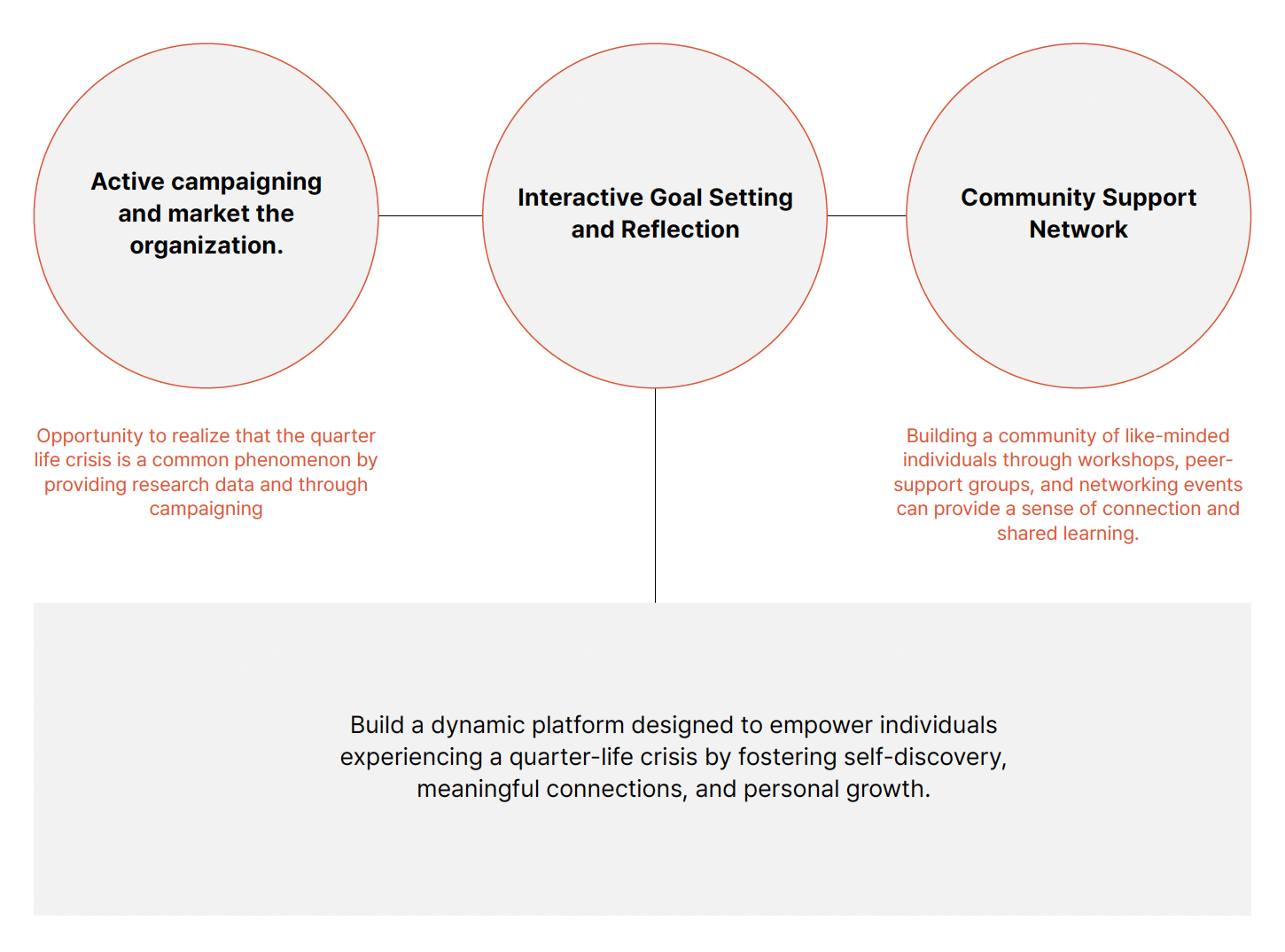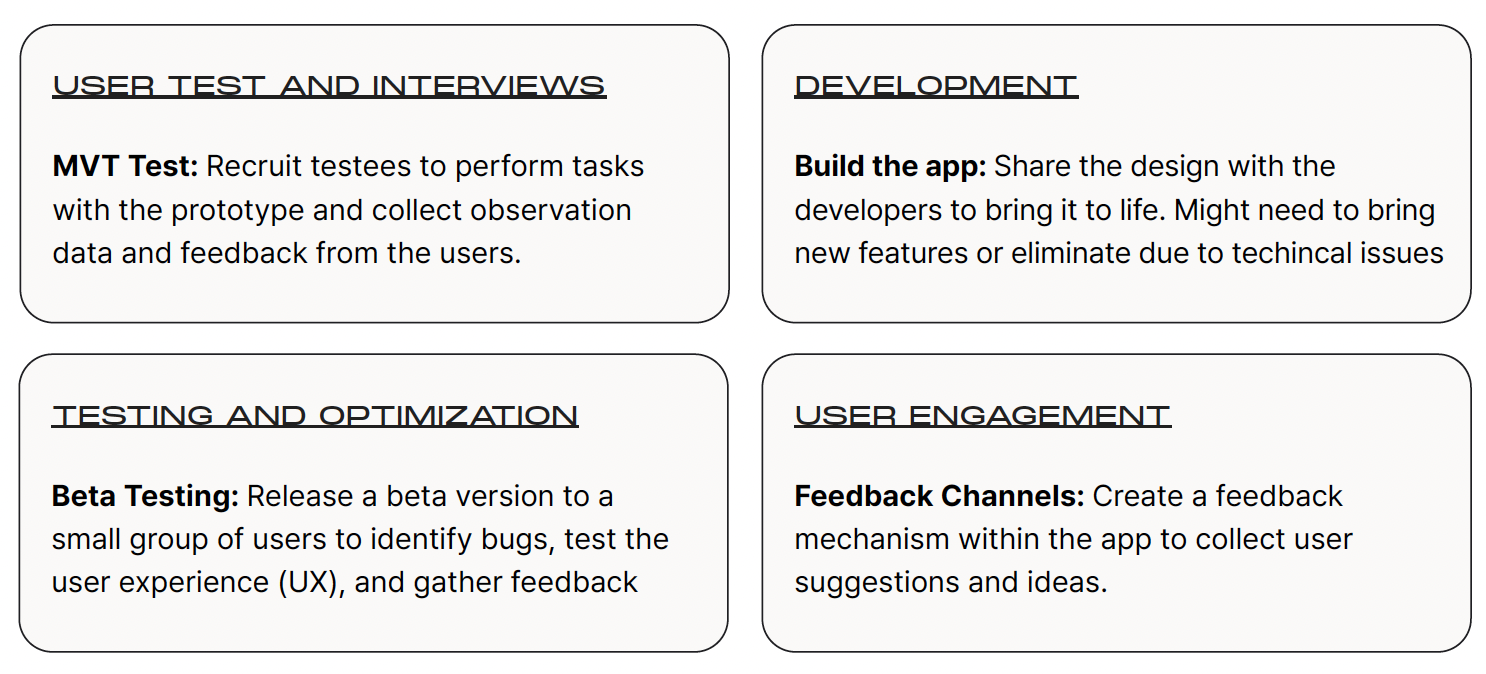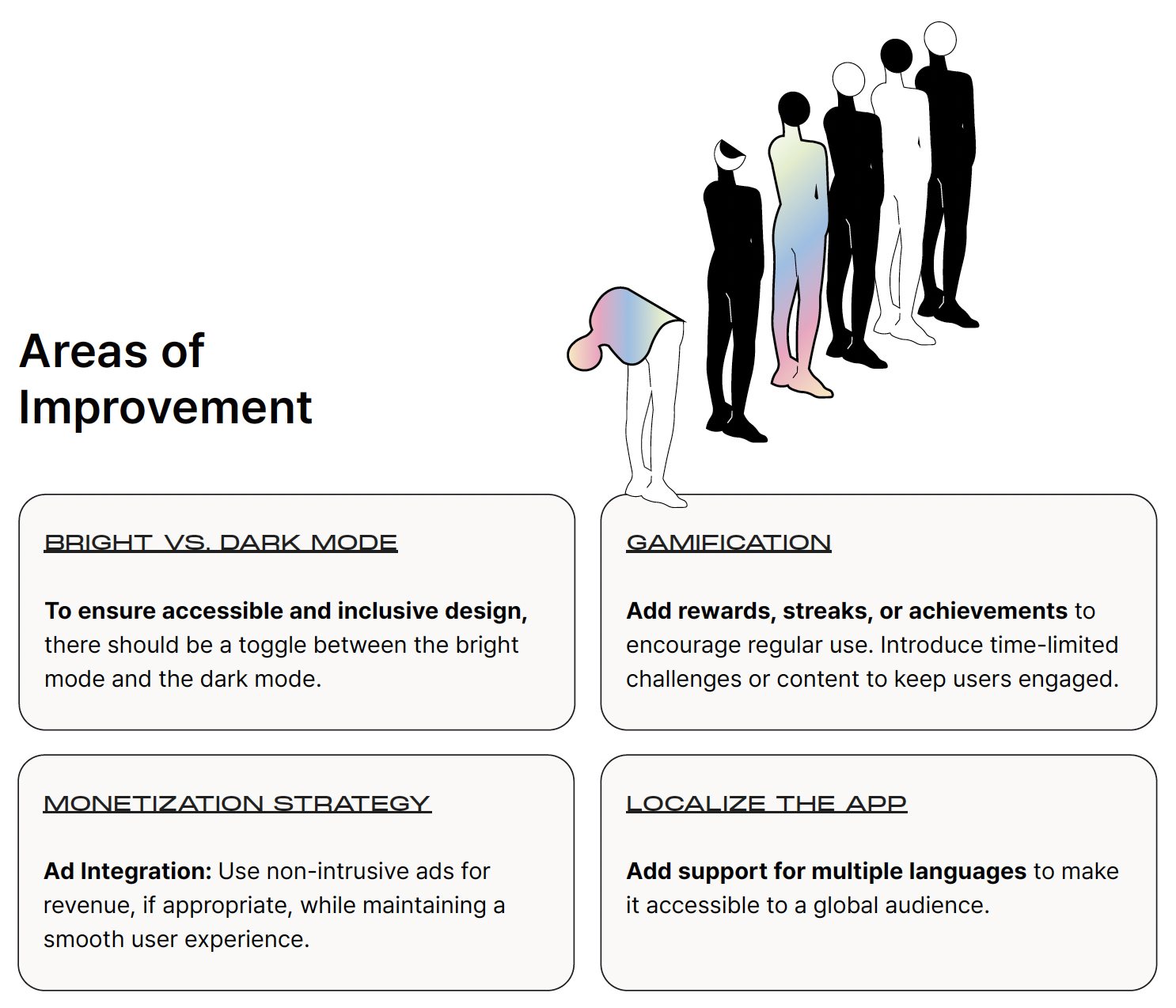Silveride

Role
Product designer
Product designer
Timeline
June 2024 - Aug 2024
June 2024 - Aug 2024
Responsibilities
UX Research
Design Thinking
Wireframe
Prototyping
Branding
Interface Design
UX Research
Design Thinking
Wireframe
Prototyping
Branding
Interface Design
Tools
Figma
Figma Jam
Adobe Photoshop
Adobe Firefly
Figma
Figma Jam
Adobe Photoshop
Adobe Firefly
Project Overview
Challeges
Redesign a taxi-hailing app accommodating physical and cognitive needs of seniors to ensure a more accessible and stress-free experience.
Opportunity
Improve the service flow of existing taxi-hailing apps in Korea and design interfaces that attract a broader range of age groups.
Project Background
How stressful would it be,
if you can’t grab a taxi
after waving for it for hours,
on an extremely hot summer day?
if you can’t grab a taxi
after waving for it for hours,
on an extremely hot summer day?
This project was inspired by my grandparents, who once stood by the road for an hour in the summer heat, unable to hail a taxi because all were booked through the "Kakao T" app. Although my grandfather tried using the app, he found it too complicated and frustrating, eventually giving up.
In our aging society, digital exclusion among seniors is not just their problem—it could become ours. Addressing this issue is vital for fostering a more inclusive society, where seniors can access essential services without being left behind, especially during extreme weather conditions.
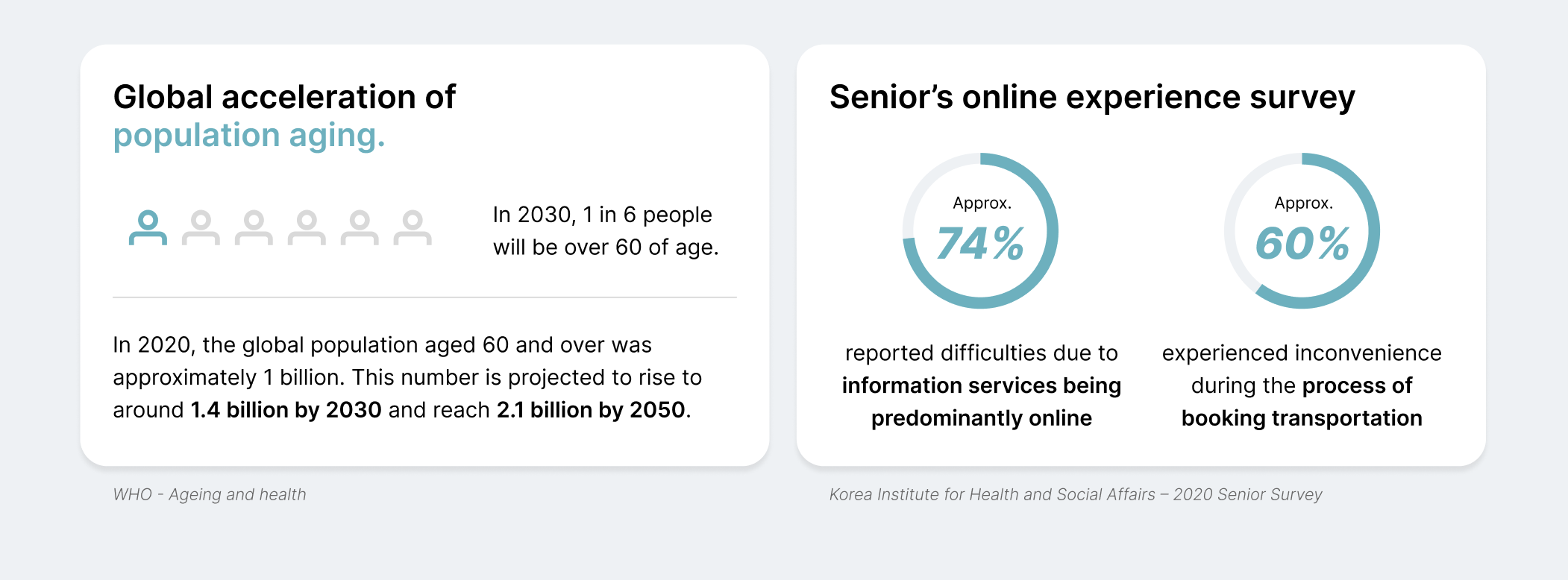
Process

RESEARCH
Desk Research
Research Objectives
- Investigate precise statistics on the increasing proportion of the elderly population.
- Examine the current status of public transportation usage among seniors.
- Analyze seniors' usage and satisfaction levels with smartphone applications.

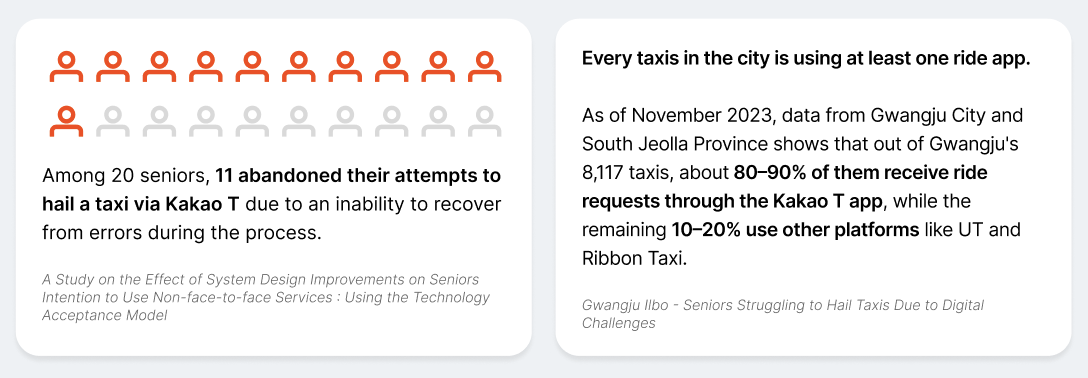
* Please note that the research above was done in Korean then translated into English.
RESEARCH
User Interviews
To gain deeper insights into the experiences with taxi-hailing apps, I interviewed three individuals of different age groups: two senior users, one in their late 70s and another in their mid-60s, as well as a user in their 50s whose parents are attempting to use the app.
Questions included:
- Do you use taxi-hailing apps like 'Kakao T'?
- What does the process look like when you are using the app?
- If you are not using the app, how do you usually get a taxi when needed?
- Are you satisfied with the current method?
- What do you do when you fail get a taxi at all?
- Other than taxi apps, do you use any smartphone applicationsat all?
- If taxi apps were redesigned in this way, would you be willing to use them?

RESEARCH
Competitive Analysis
My analysis is based around what kind of services are offered by the apps in the same category, and how intuitively they are built within the platform.
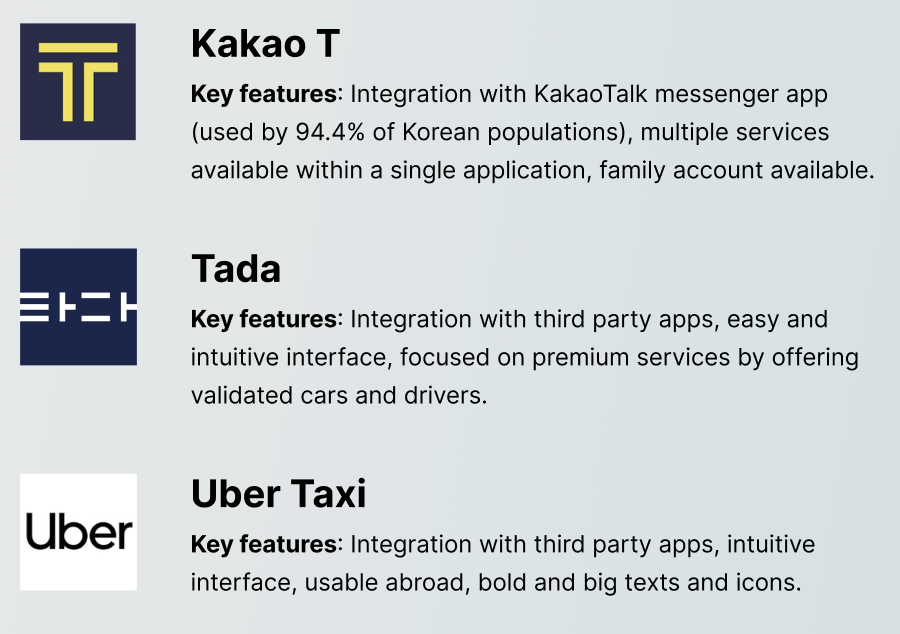
⚠️️ Please be mindful that user preferences may vary, and the pros and cons are based on the general observation of the platform.

RESEARCH
Identifying problems
Problems in the existing services:
Initial Complexity Barrier:
Most senior users feel overwhelmed by the complexity of the app's first screen and hesitate to proceed further.Difficulty in fixing the error:
Most seniors had trouble in the error recovery. Some had to restart the app entirely to fix a little error.Overuse of cryptic symbols and icons:
Symbols and icons that are commonly understood by the majority may not be communicated correctly by the seniors.Lost in the process:
Frustration in lack of clarity in stating the progress towards the completion, which caused a loss in motivation.Dynamic Input Challenges: Frequent and overly fluid interactions, such as entering and modifying addresses, are disruptive for older users.
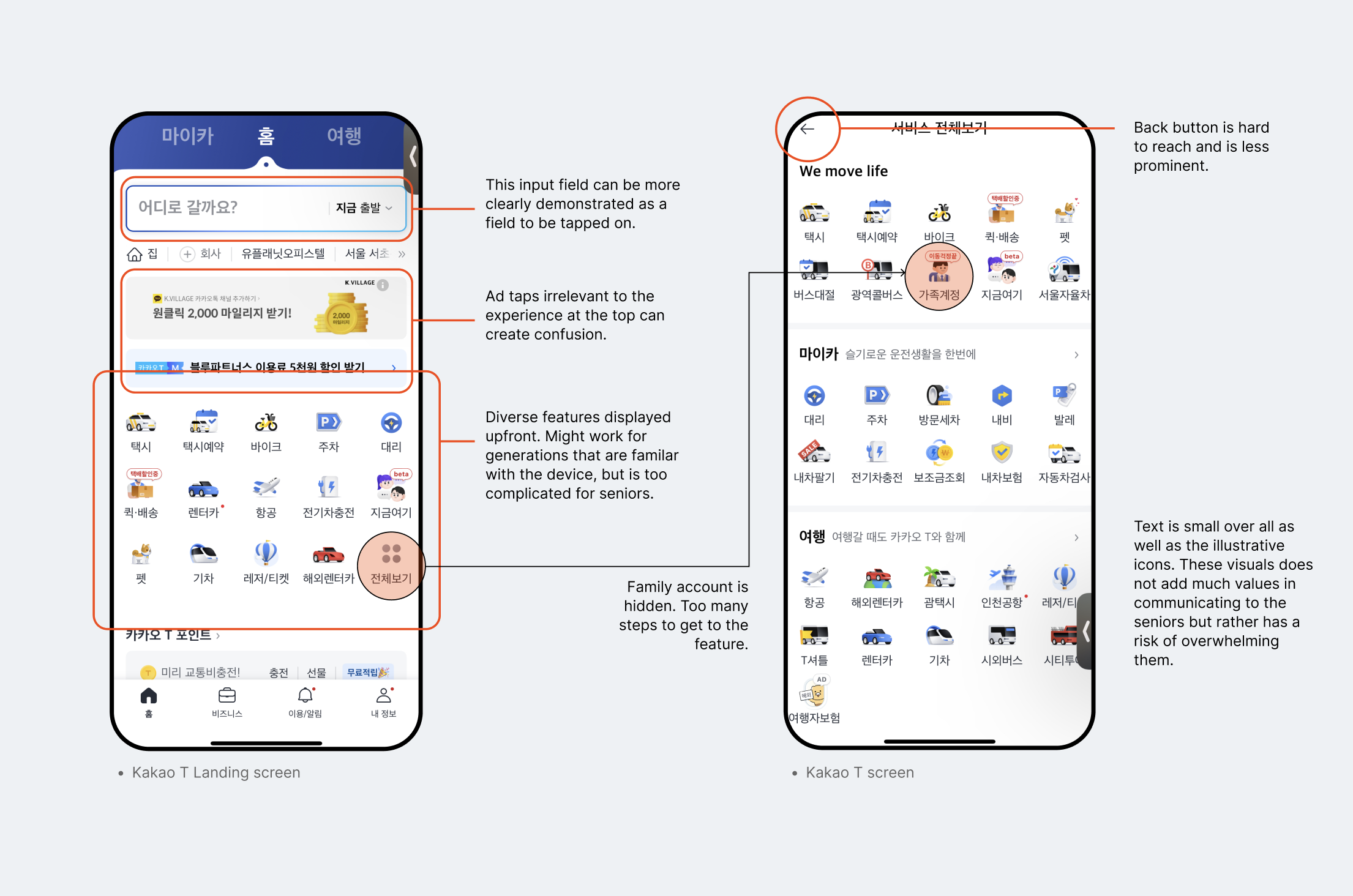
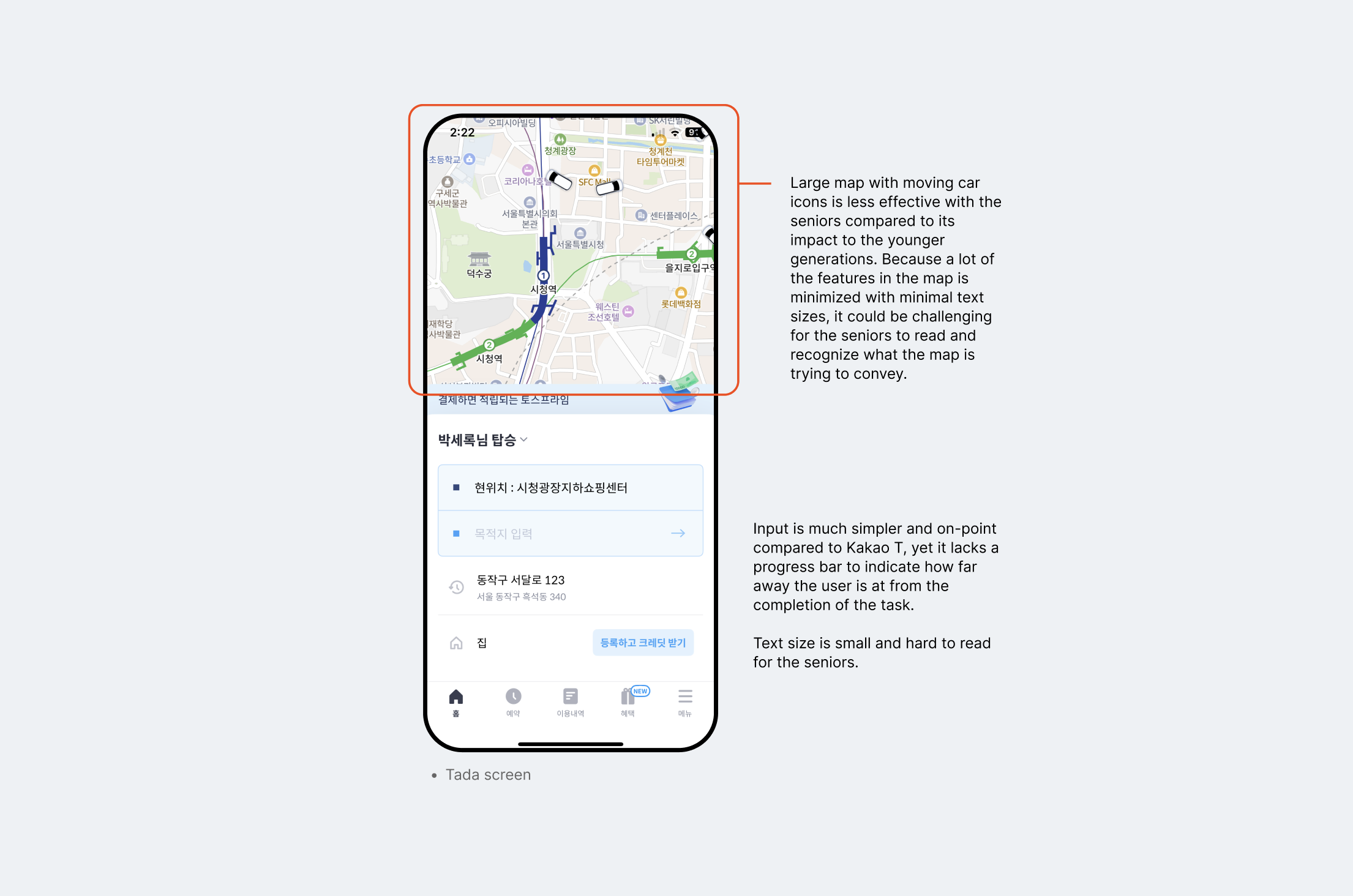
SYNTHESIS
Defining Problems
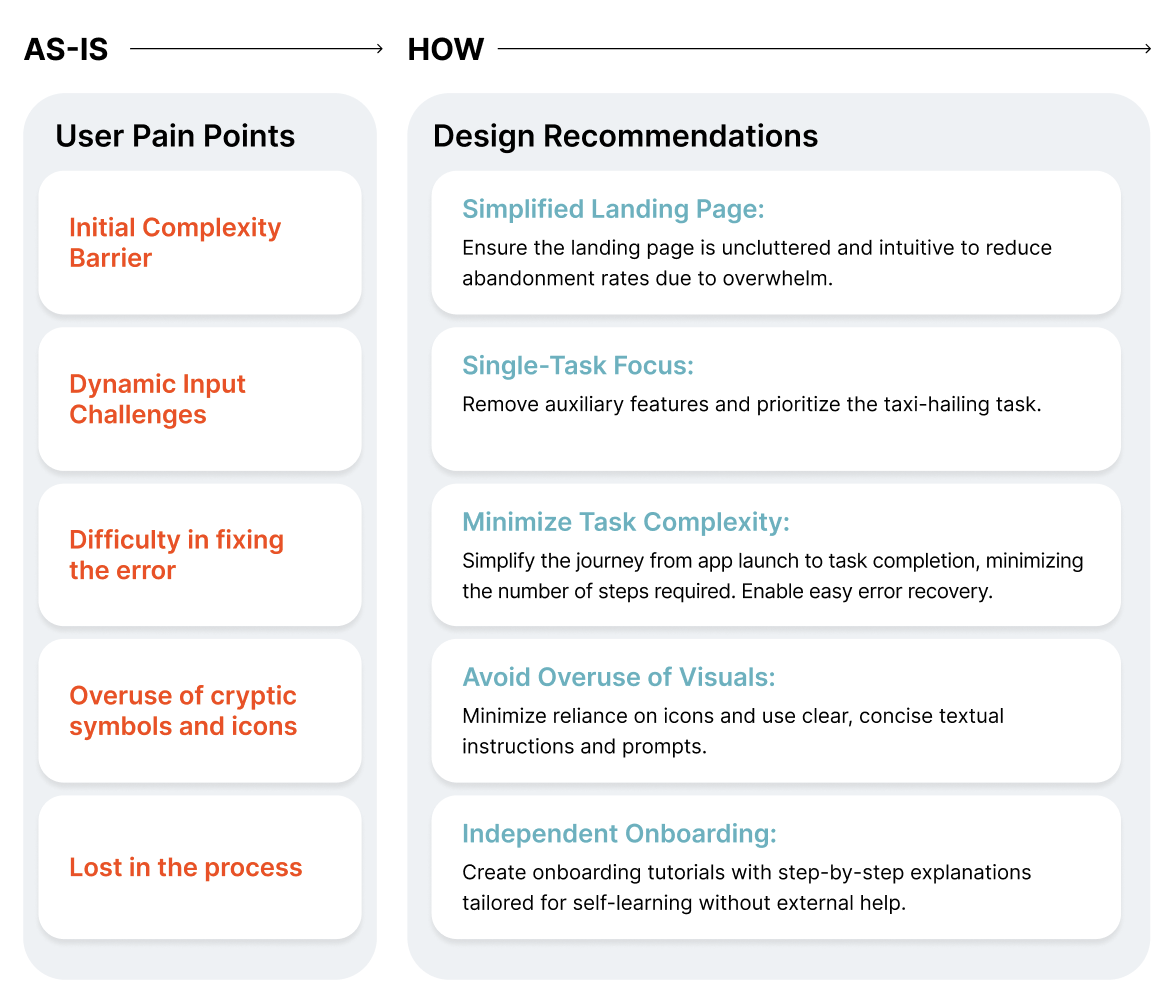

SYNTHESIS
Primary Persona
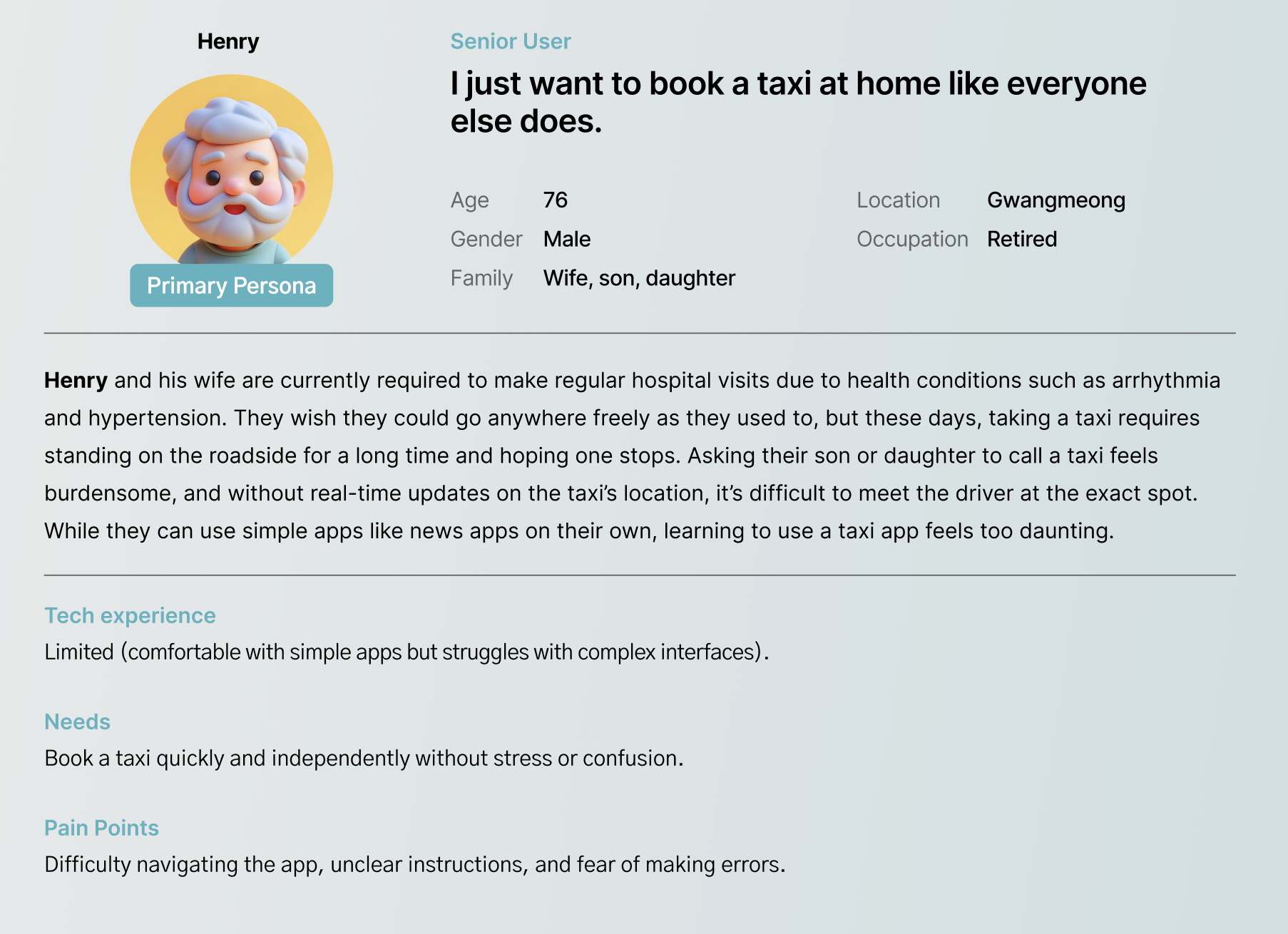
User Journey - Henry
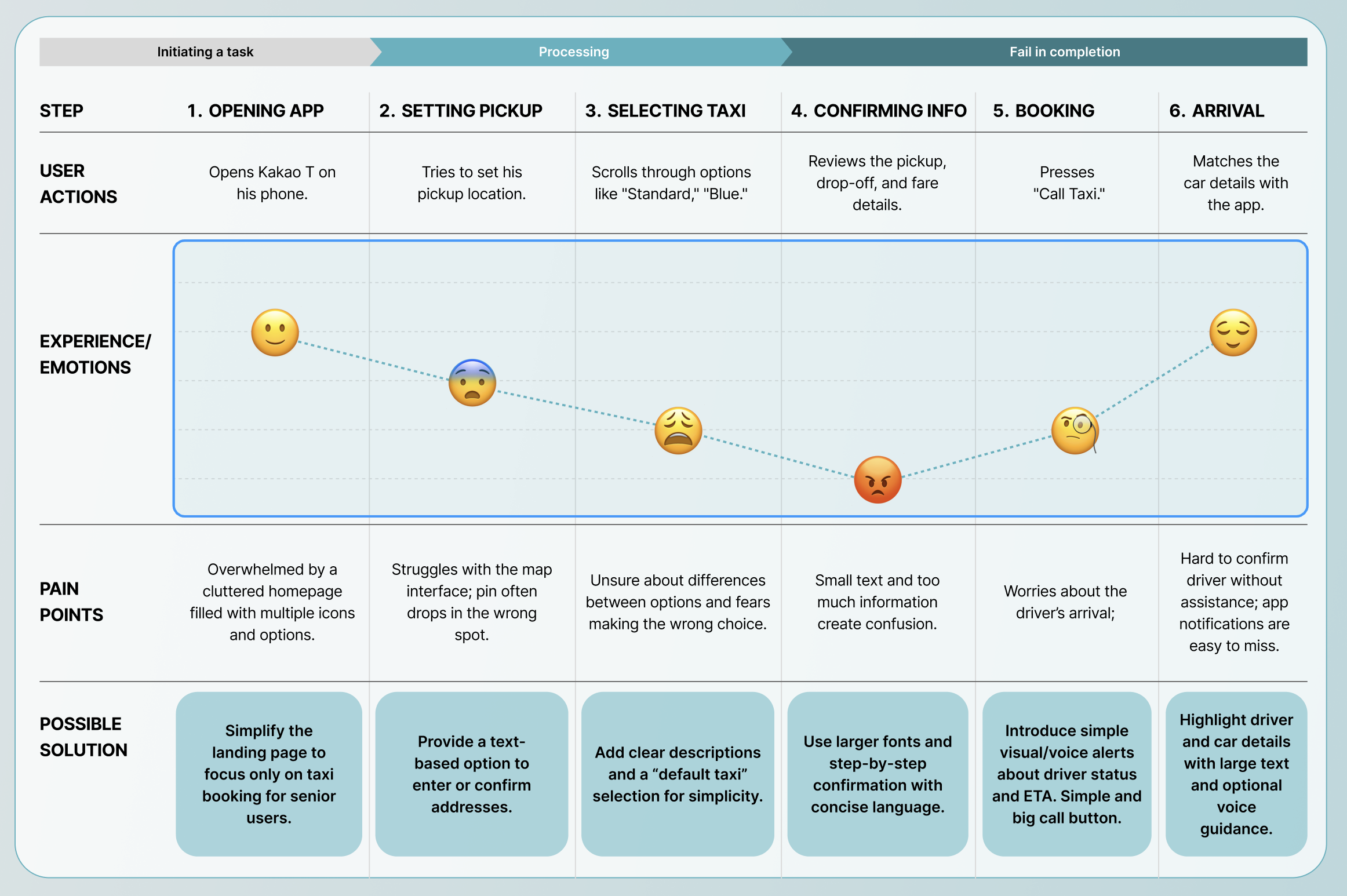
SYNTHESIS
Secondary Persona
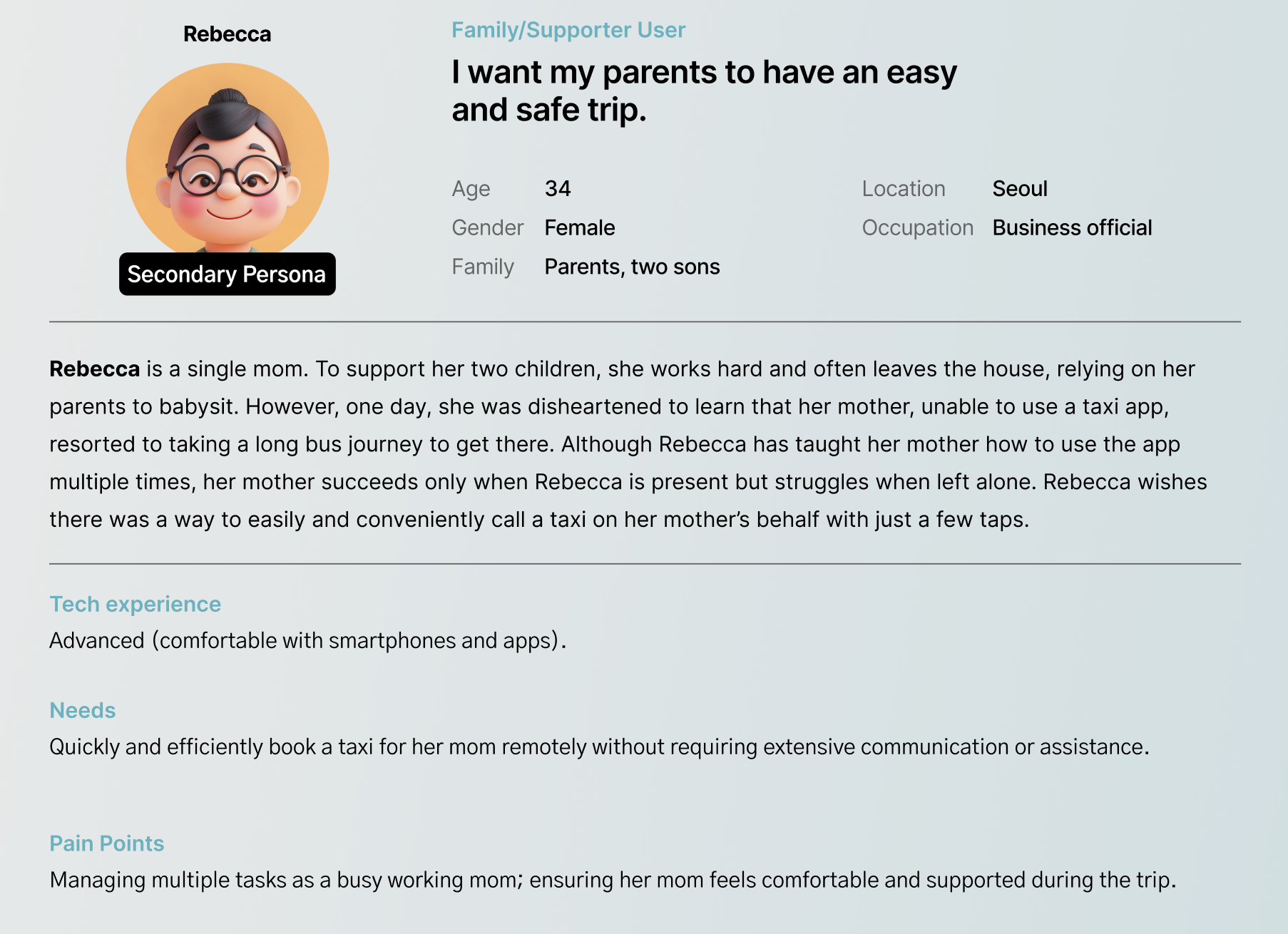
User Journey - Rebecca
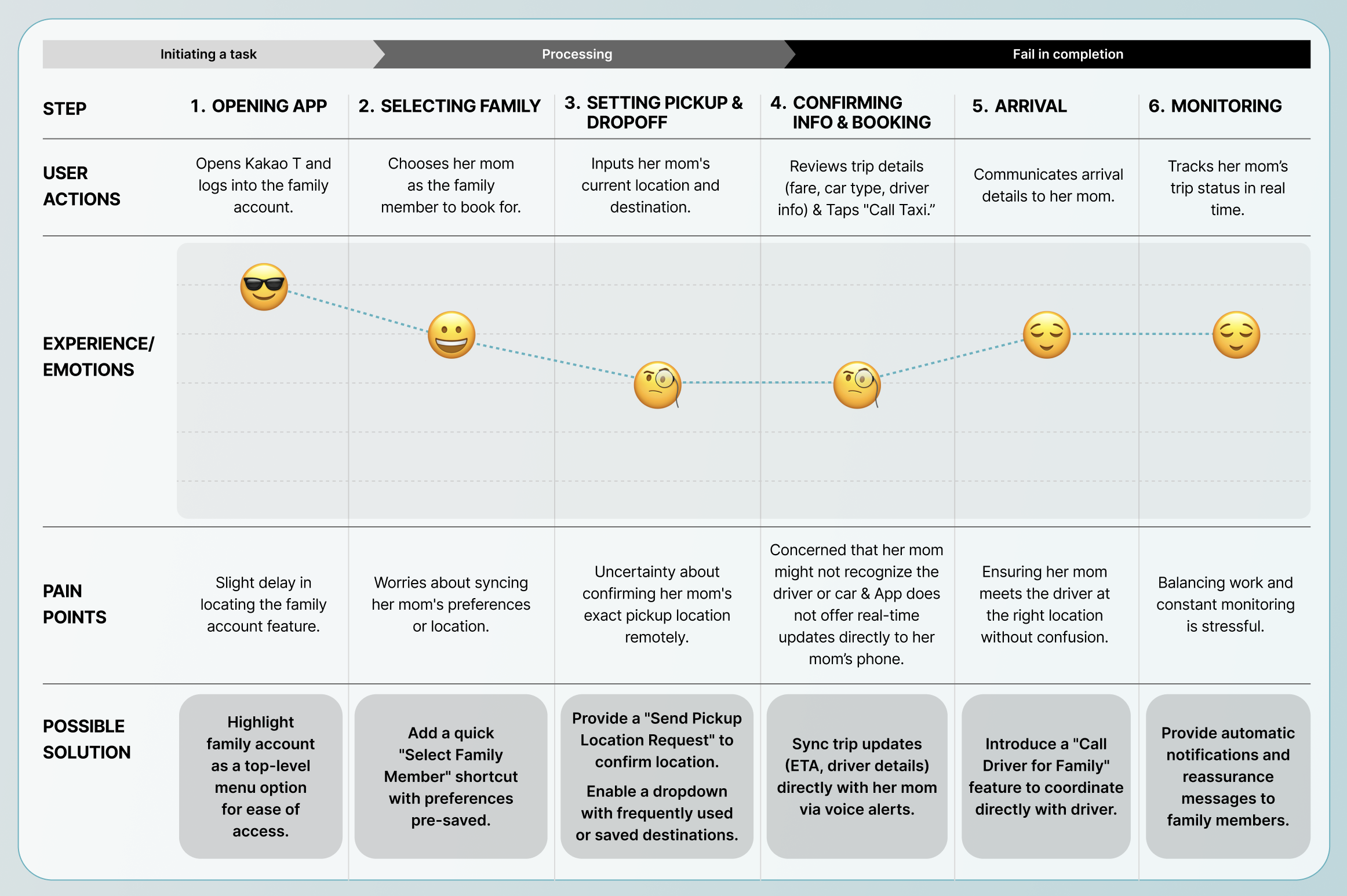
IDEATION
Possible Solutions
Based on the challenges faced by direct app user with cognitive and physical limitations and proxy user managing her mom’s needs remotely, the solution focuses on creating an inclusive, simplified, and intuitive experience.
︎ Design Goals
- Simplified Navigation: Minimize steps and reduce cognitive load by focusing on a single task at a time (e.g., taxi booking).
- Intuitive Interfaces: Use text-based prompts, large buttons, and a logical flow that caters to both novice users and confident users.
- Error Recovery: Provide clear, step-by-step guidance and easy mechanisms to undo or correct mistakes.
- Supportive Features: Include voice guidance, step-to-step tutorials and real-time communication tools for all users.
- Family Integration: Ensure seamless coordination between family members, allowing proxy users to assist easily.
Possible Senior user flow:
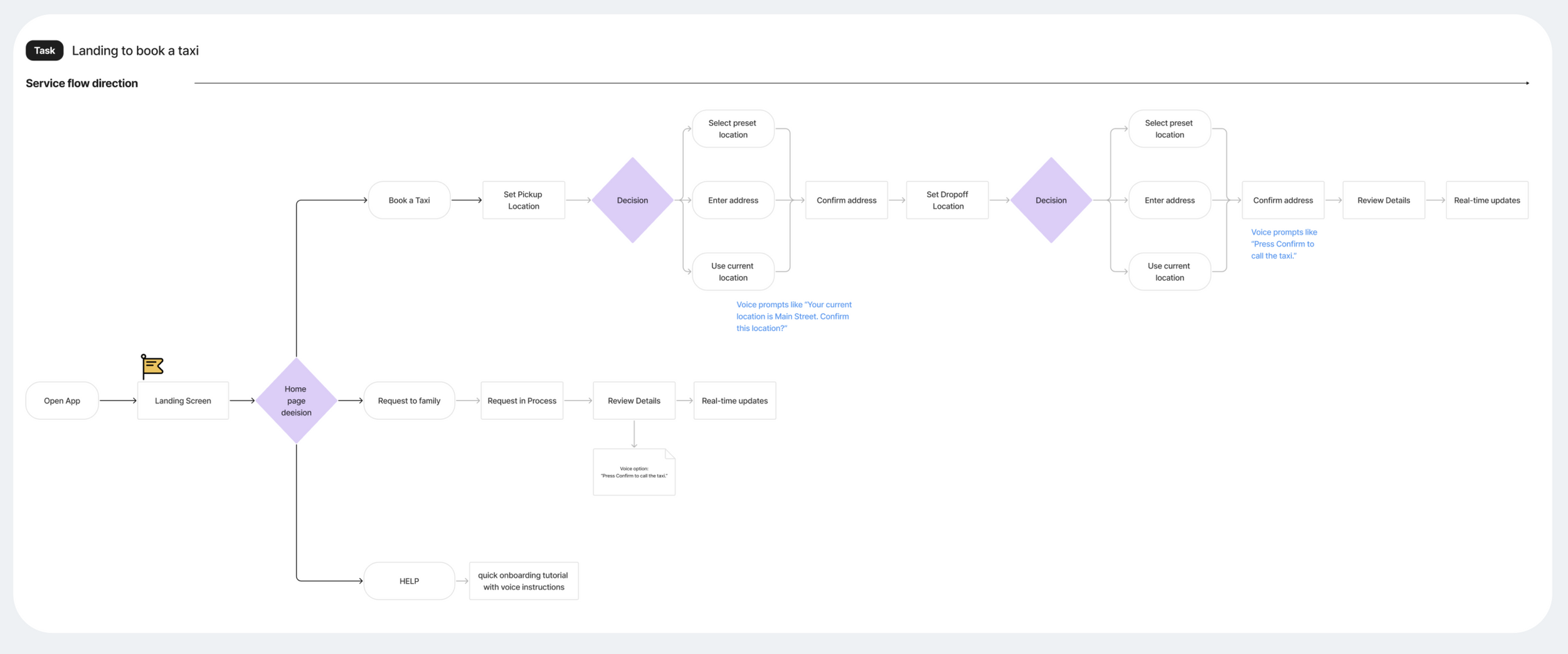
IDEATION
Information
Architecture

IDEATION
Information
Architecture

IDEATION
Low Fidelity Wireframe
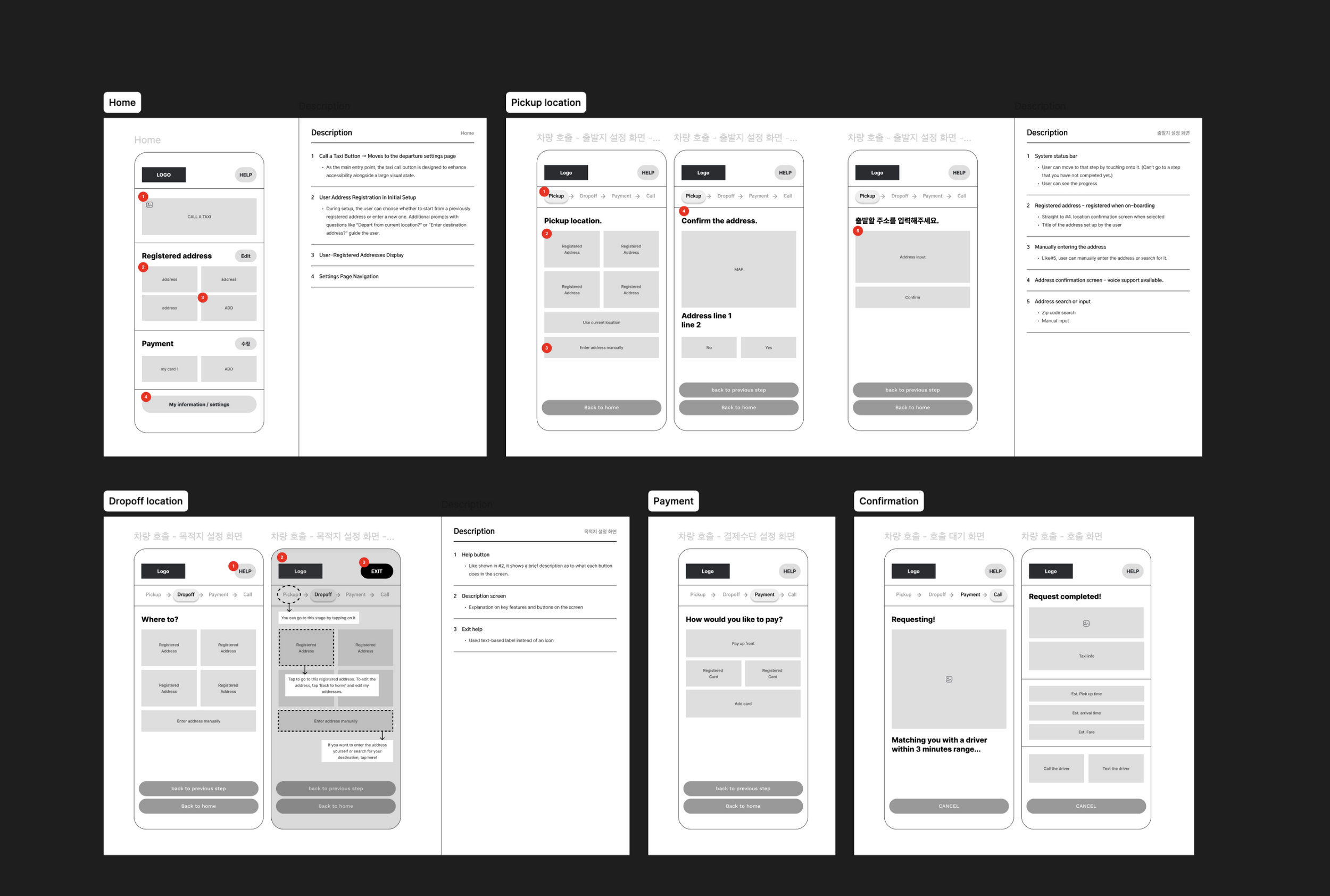
EXECUTION
Brand Identity

Colour & Typography:

EXECUTION
High Fidelity
The high-fidelity wireframe reflects the culmination of user research and iterative design in redesigning the taxi app for seniors and caregivers.
Key challenges, such as overly complex navigation, inaccessible visuals, and lack of intuitive flows, were addressed.
The redesign prioritizes simplicity, clarity, and accessibility by introducing features like a streamlined home screen, pre-registered addresses and payment options, voice guidance, and step-by-step instructions.
This wireframe demonstrates a user-friendly interface tailored to ensure seniors can independently and confidently book a taxi while enabling caregivers to provide seamless support when needed.
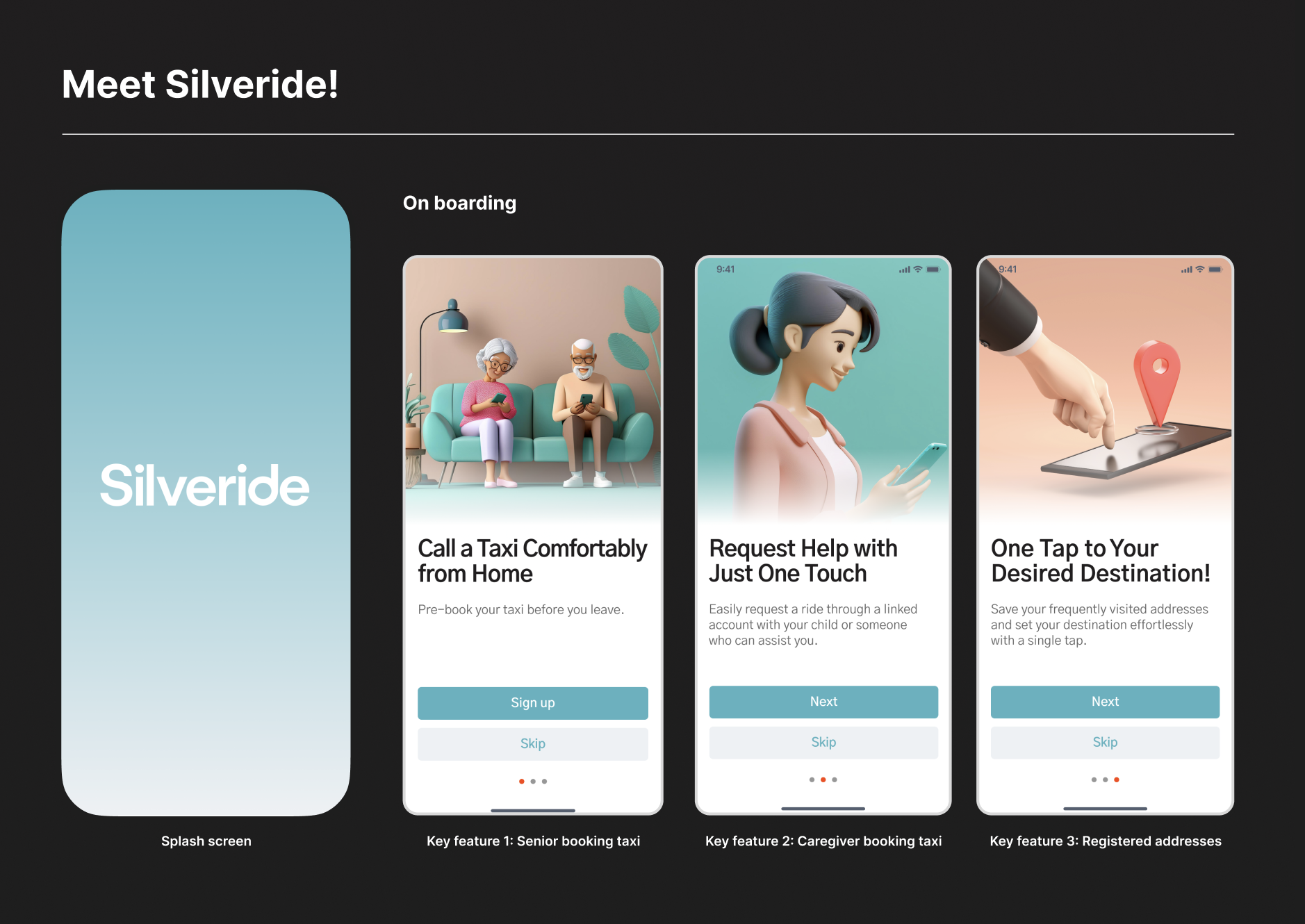



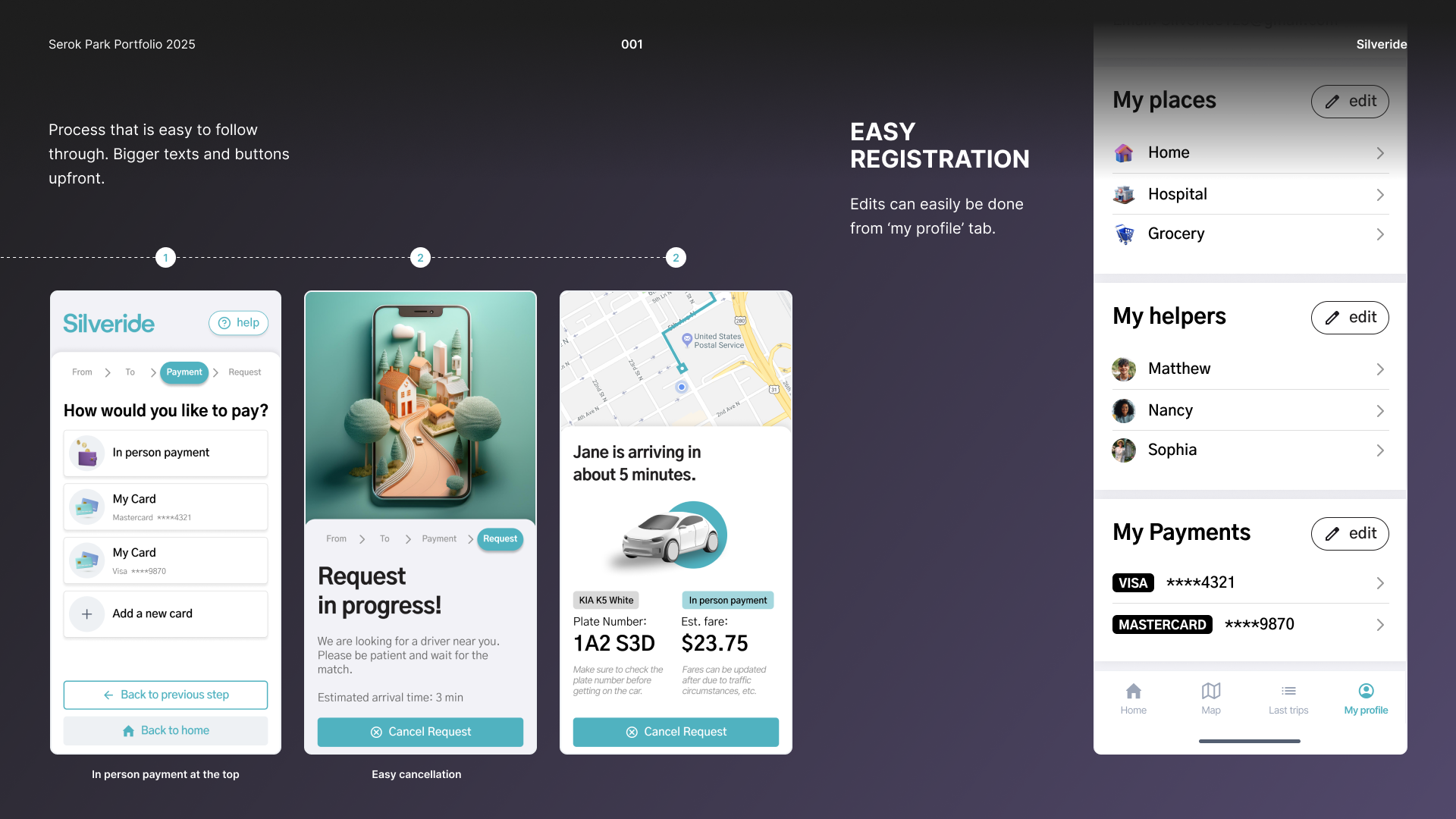
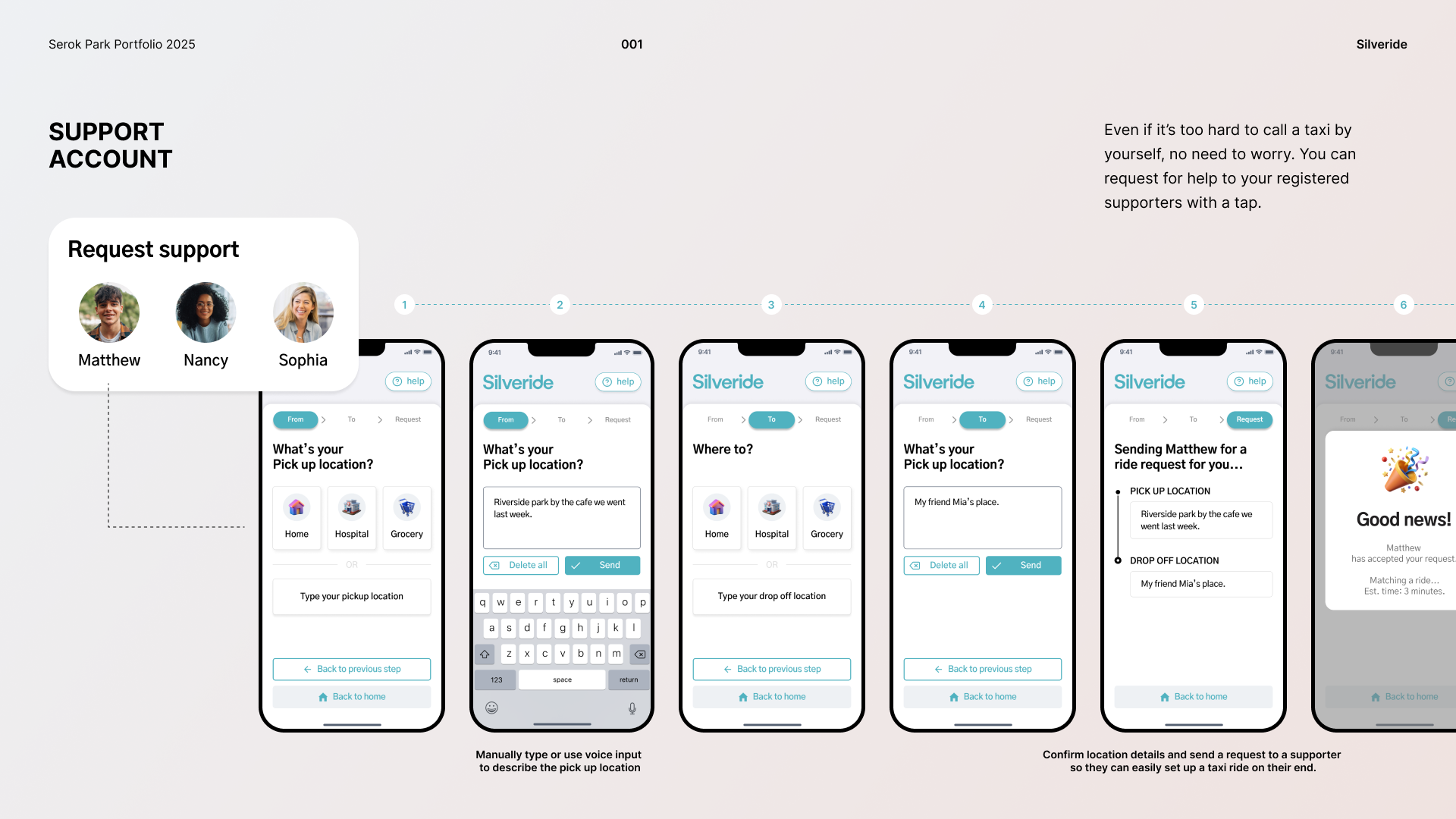
REFLECTION
Next Steps
MVT Testing
Conducting another set of interview after going through a minimum viable testing to see if the redesigned features are working better for the senior users.
- Recruitment & Pre-test Briefing
- Assign tasks to perform
Seniors: Book a taxi using pre-registered addresses and explore error recovery features.
Caregivers: Use the family account feature to book a taxi for a senior. - Observation
- Post-Test Feedback
- Data Collection
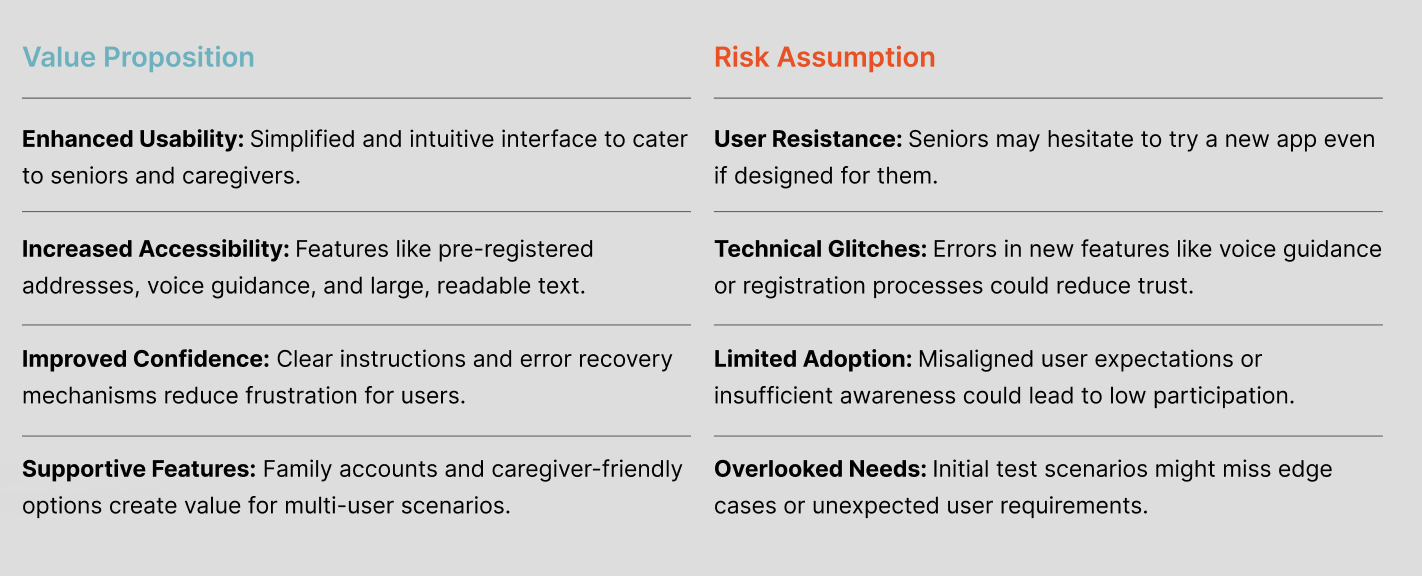
REFLECTION
Conclusions
This project tackled the critical challenge of making taxi booking apps more accessible and inclusive for seniors and caregivers. Through user research and iterative design, I focused on identifying key barriers, such as overly complex interfaces, lack of error recovery, and insufficient support for senior users with cognitive challenges.
Prioritizing simplicity, intuitive navigation, and tailored features – such as pre-registered addresses, family accounts, and voice guidance guided me to create a solution that empowers users like Henry and Rebecca to book taxis confidently and independently.
Personal reflection
During the two months I worked on this project, I learned and gained a lot. Personally, one of the most valuable realizations I had was the importance of asking myself, “Can I create a product that truly embraces and serves those closest to me?” as a product designer. If I can’t even address the pain points from those around me, how can I create a greater product that works for bigger group of people?
Through this project, I identified areas where I lack skills and need to improve and sparked my motivations, and it also sparked a deeper curiosity about how rapidly advancing technologies, such as artificial intelligence, can contribute to and enhance my work.
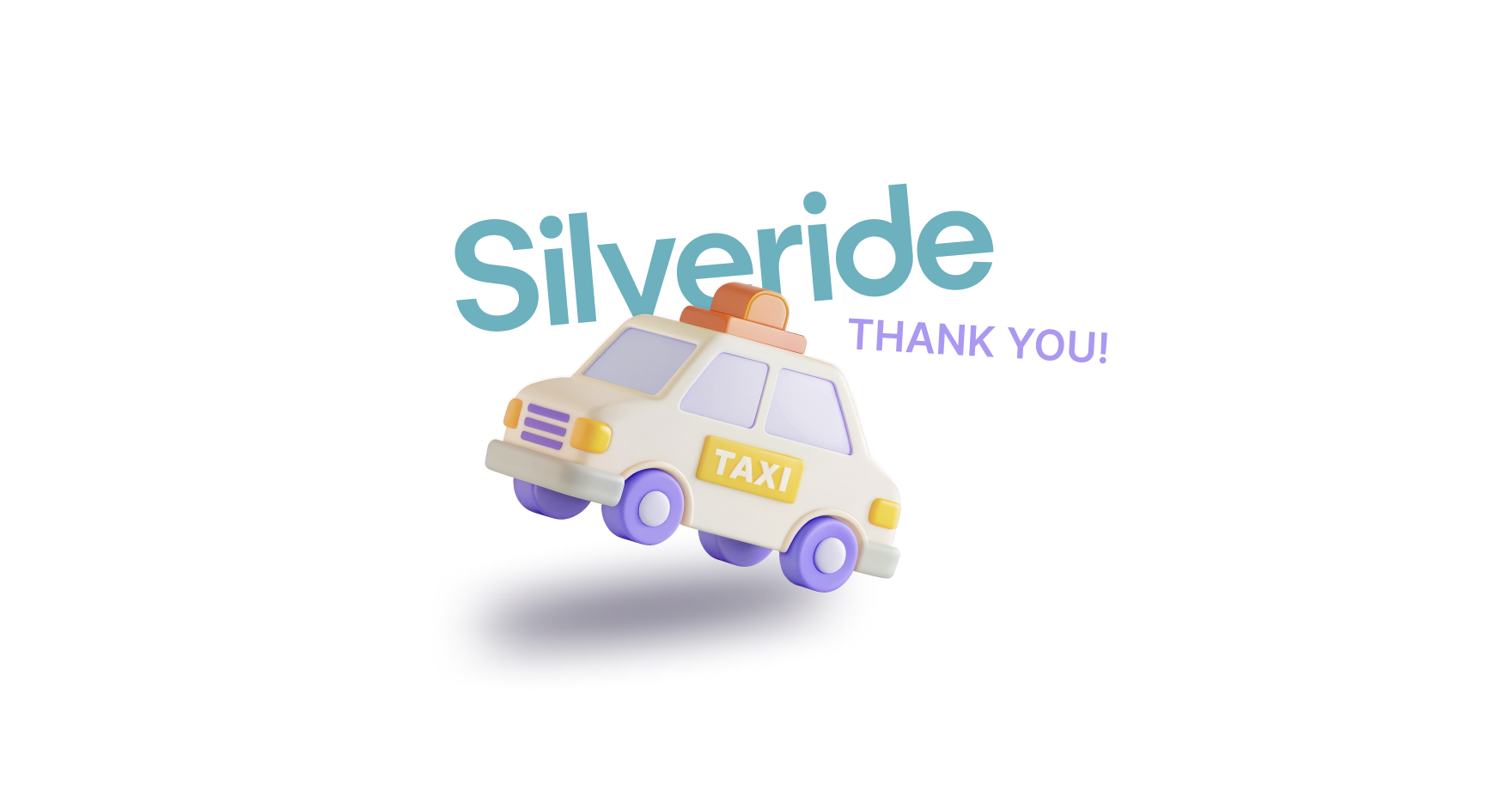
Redefine

Role
Team Lead, Art director, Lead designer
Team Lead, Art director, Lead designer
Timeline
Sept 2020 – Jan 2021
Sept 2020 – Jan 2021
Responsibilities
Design Thinking
Brand Identity
Product Design
User Research
Art Direction
Design Thinking
Brand Identity
Product Design
User Research
Art Direction
Tools
Figma
Adobe Photoshop
Adobe Illustrator
Adobe InDesign
Cinema 4D
Figma
Adobe Photoshop
Adobe Illustrator
Adobe InDesign
Cinema 4D
Project Overview
Challeges
Establish a campaign to address quarter-life crisis and design a solution that can help people in crisis overcome their hardships.
Opportunity
Motivate and encourage young adults to bring them as part of a healthy society with broader opportunities and innovations.
Participated Team Members:
Serok Park (Selina)
Design Lead, Art Direction, Visual Design, Research, Copywriting
Kai Gaspard
Visual Design, Research, Motion Design
Hanting Wang
Visual Design, Research,
3D exhibition Design
Project Background
Project Synopsis: The Crisis
In today’s society, success is often measured by wealth or status. However, success cannot have a universal definition, as it varies based on individual perspectives1. The “Quarter-Life Crisis,” characterized by anxiety about the direction and quality of one’s life2, affects 75% of individuals aged 25 to 333, according to LinkedIn research.
Project Description
Redefine is an organization dedicated to challenging traditional notions of success and guiding individuals in pursuing their personal goals. We aim to help users recognize that success is unique to each person by encouraging them to define it in their own terms. Through self-reflection and alignment with personal values, individuals can clarify their visions, set meaningful goals, and continue their journey toward success.
Process

Research
1. Target Audience Analysis
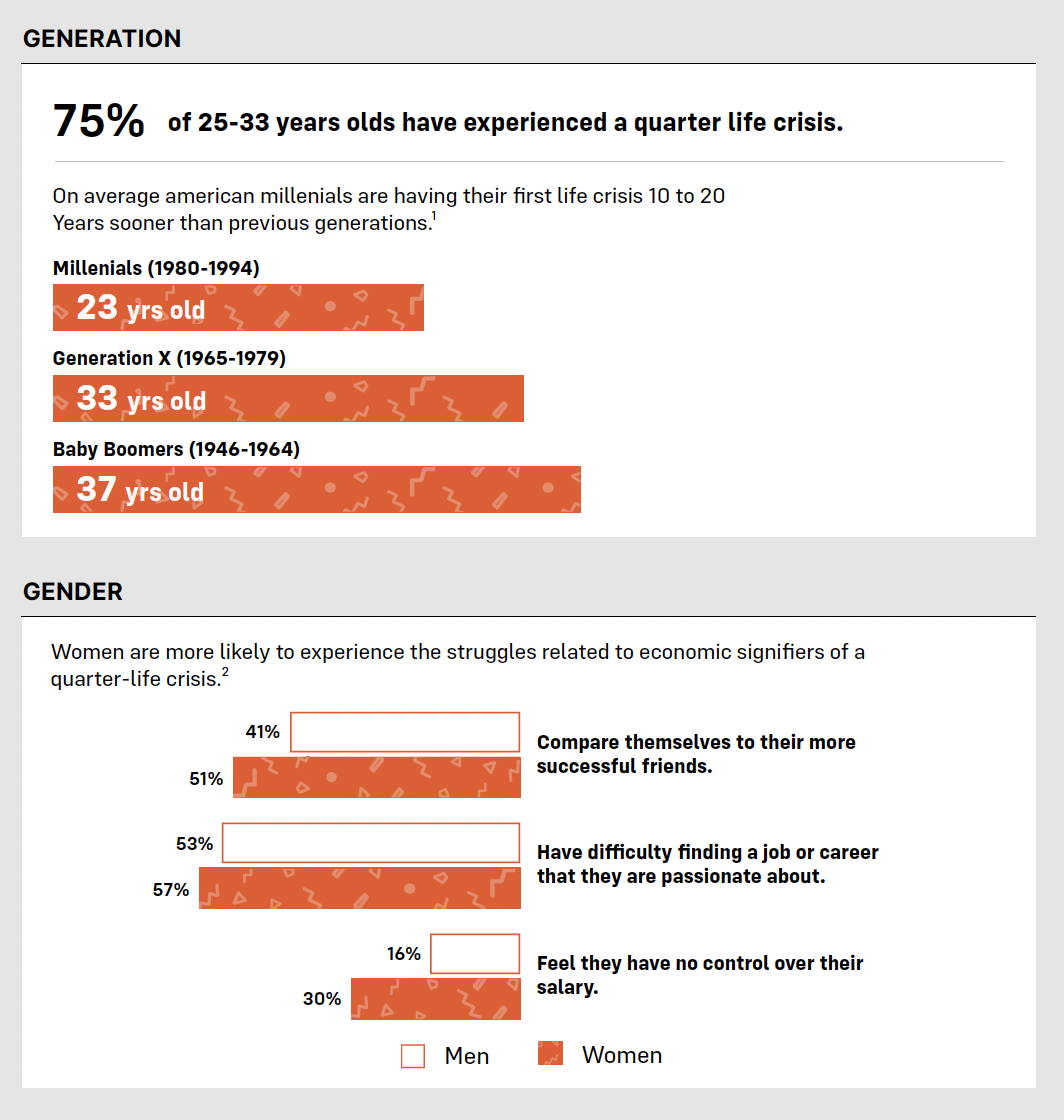
2. Factors Triggering the Crisis





3. What Did People Do to Overcome Quarter Life Crisis?
“How can we integrate this into our service?”

Hypothesis![]()
User Analysis Summary
Primary User
The most common trigger for a quarter-life crisis is uncertainty about life or career direction. Our primary users are individuals struggling to identif their purpose or “driving force” and seeking clarity about their future.
Secondary User
The second most common trigger is financial dissatisfaction. Our secondary users are individuals who feel unfulfilled by their current income and seek ways to improve their financial situation.
Tertiary User
The third major trigger is stress from responsibilities, such as limited freedom to travel, societal pressures to marry, or start a family. Our tertiary users are individuals seeking greater independence and freedom from these constraints.
User Persona [Slideshow]


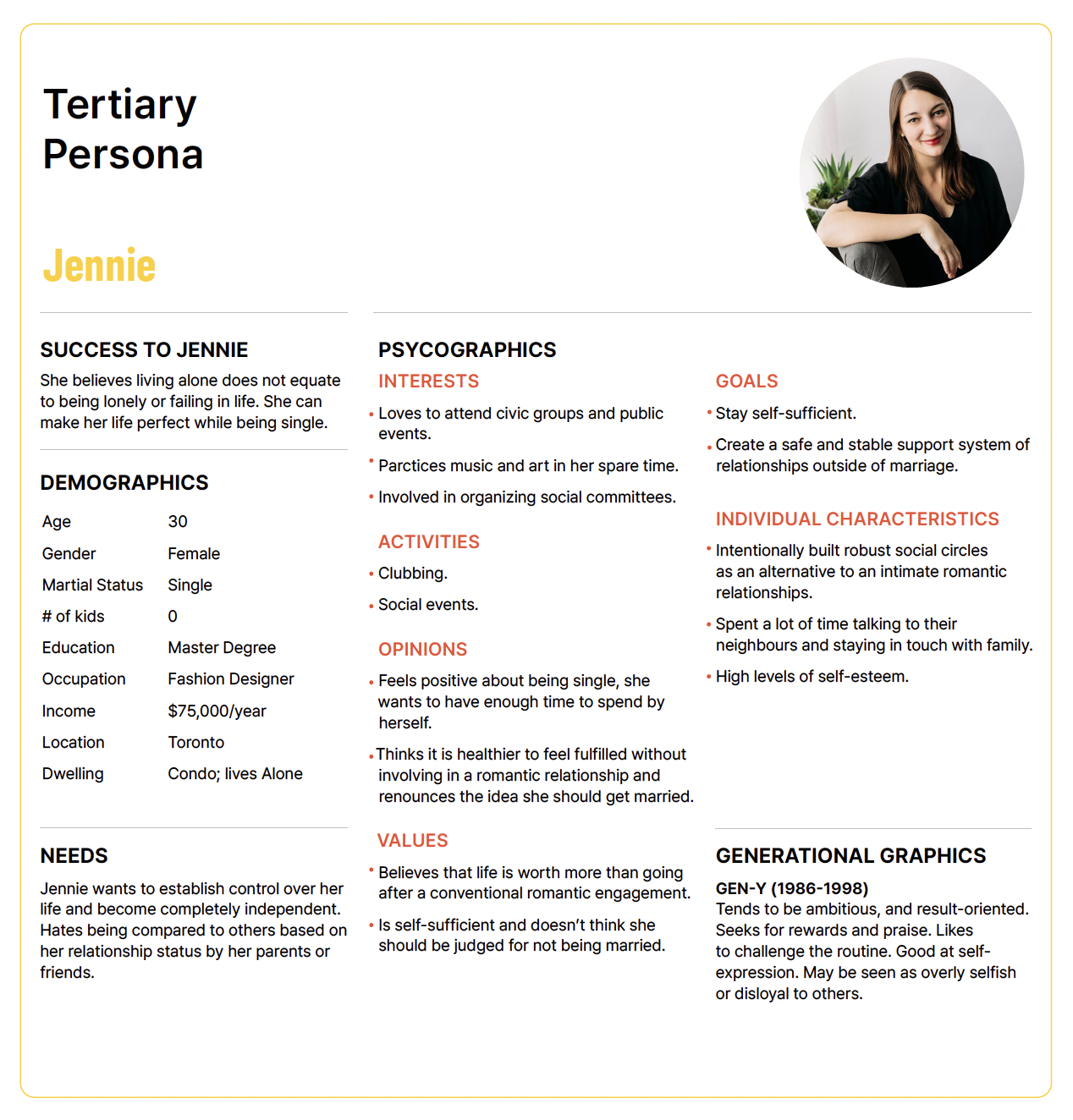
Brand Development
Through in-depth research into the causes of quarter-life crise among young adults, we aimed to redefine success as understandin what it means to you personally. Our insights revealed that the journey to success begins with setting meaningful goals roote in an individual’s core values. These values act as a guiding force ensuring that as long as your goals align with them, the path to your version of success remains accessible.
To redefine success based on
an individual's values.
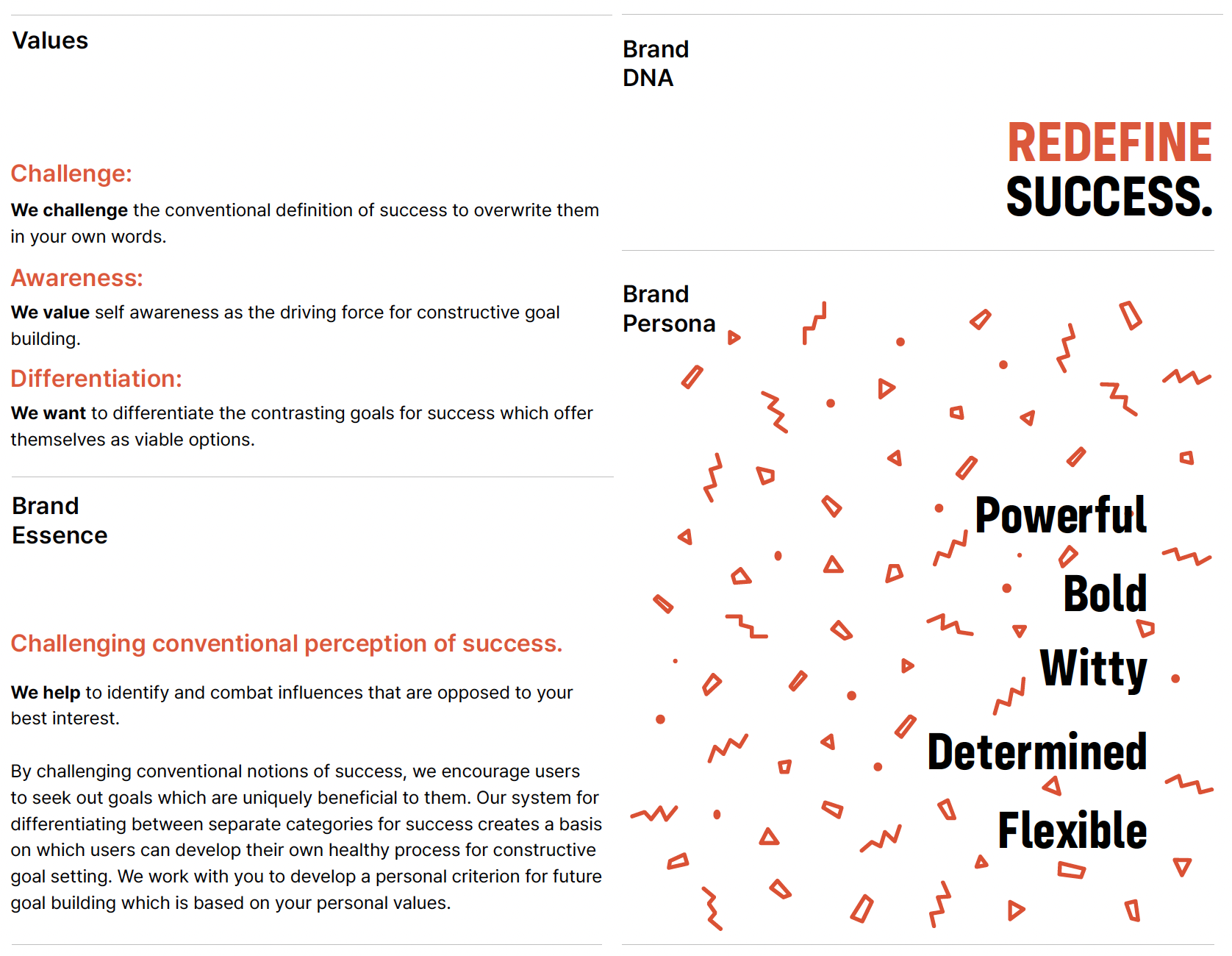
The Brand

Colour

Typography

Design Applications
2D Applications
To help users identify their unique values, we categorized a comprehensive list and narrowed
it down to seven key ones: Accomplishment, Relationships, Prestige, Wealth, Health, Kindness, and Passion. These categories serve as a startin point for introspection, helping our audience reflect on what matters most to them. From these seven values, we selected three to create headlines and lead copy for our integrated marketing communications, ensuring our messaging resonates deeply with our audience’s aspirations and needs.

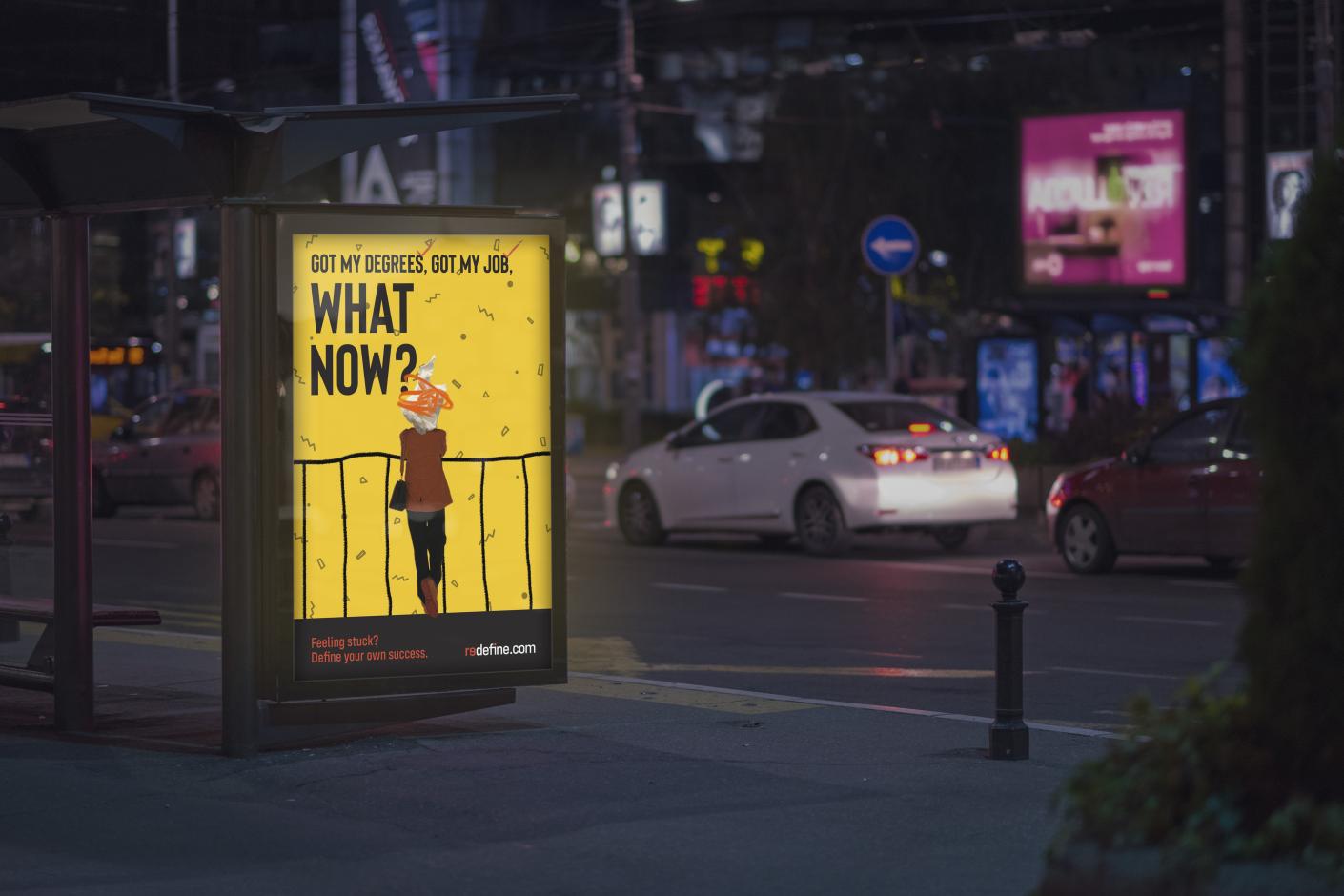


3D Applications:
Public exhibition design
Public exhibition design
The Redefine exhibition features three paths leading to a central mirror room, symbolizing the journey of self-reflection and value discovery. Each path highlights a different life struggle, with stamps available for collection along the way. Visitors who collect all three stamps can share a photo on Instagram with #RedefineSuccess for a chance to win three life-coaching sessions. This event encourages deeper engagement and a closer look at the exhibition’s materials.

3D concept design rendered by Hanting Wang
Merch design

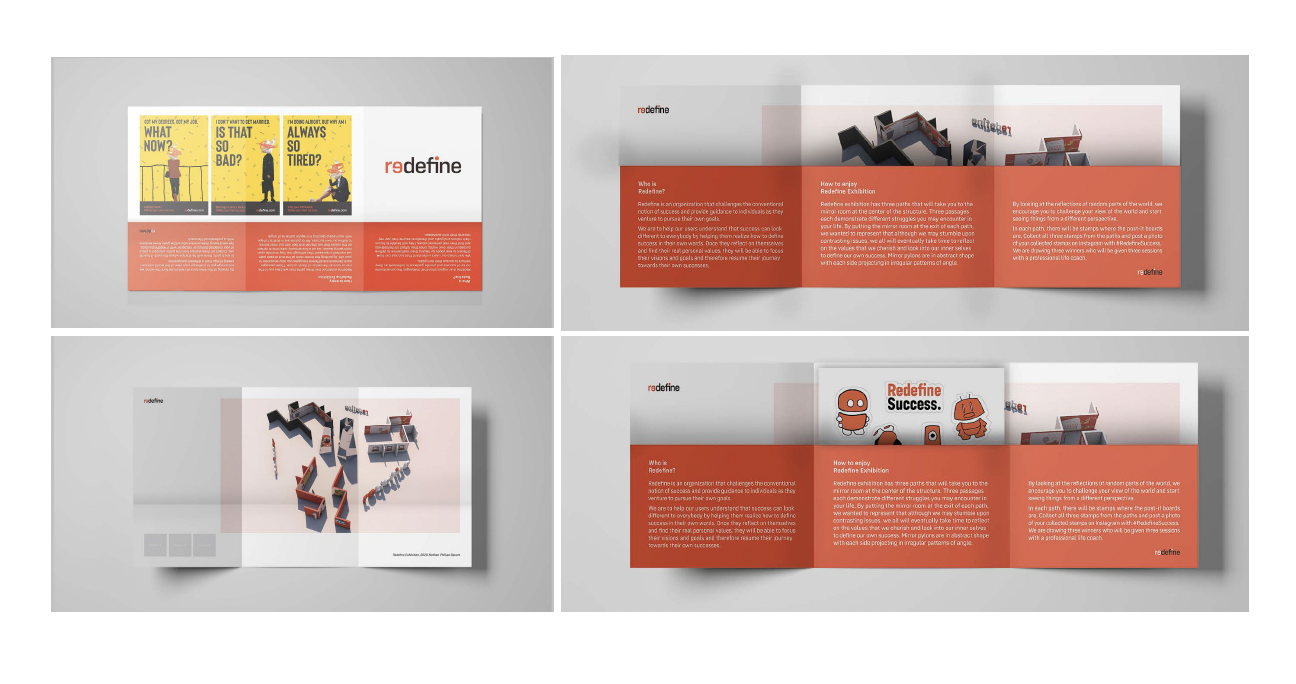

Design Solution
︎ Design Goals
- User-Centric Experience: Ensure the app is intuitive, visually appealing, and user-friendly, catering to individuals in a state of uncertainty or stress.
- Engagement and Motivation:
Incorporate interactive elements, gamification, and progress tracking to keep users engaged and motivated throughout their journey.
-
Community Building: Facilitate meaningful connections through forums, group discussions, and mentorship opportunities.
- Guided Self-Discovery:
Offer tools and exercises for reflection, goal-setting, and value identification to help users gain clarity and direction.
- Accessibility and Inclusivity: Ensure the app is accessible to users with diverse needs and backgrounds, offering features like multiple languages and compatibility with assistive technologies.
Possible User Flow

Low/Mid Fidelity Wireframe

Next Steps
- Complete wireframing for all services on the platform
-
User Testing and Feedback
• Conduct Usability Testing
• Collect Feedback - Iterate and Refine the Design
• Address Feedback
• Enhance Content - Design High-Fidelity Mockups
• Visual Design
• Interaction Design - Prepare for Prototyping or Development
- Continue Validation and Iteration • Test the prototype
Conclusions
The Redefine project represents a meaningful journey to address the struggles faced by individuals during a quarter-life crisis. By challenging conventional notions of success, the project provides a platform for self-discovery, goal-setting, and community engagement. From initial research to the design of an app, an exhibition, and supporting materials, Redefine successfully integrates innovative tools and experiences to inspire users to redefine their own paths to success. The project demonstrates a thoughtful and usercentered approach, emphasizing inclusivity, empowerment, and personal growth.

Wannawould

Role
Graphic designer
Graphic designer
Timeline
Jan 2021 – April 2021
Jan 2021 – April 2021
Responsibilities
Design Thinking
Brand Identity
Product Design
User Research
Art Direction
Game Design
Design Thinking
Brand Identity
Product Design
User Research
Art Direction
Game Design
Tools
Figma
Adobe Photoshop
Adobe Illustrator
Adobe InDesign
Figma
Adobe Photoshop
Adobe Illustrator
Adobe InDesign
Project Overview
WANNAWOULD is a card game designed to help players reflect on their true selve versus their ideal personas. Players select responses to various scenarios — both their ideal choice and their realistic one. By comparing these answers, the game highlights
the gap between aspirations and reality, encouraging self-awareness and proactiv engagement with life. It fosters the realization that there are no right or wrong answers, only differences in perspective, where one person’s choice might be another’s ideal.
Whether for fun or deeper introspection, WANNAWOULD offers a platform for self discovery and growth.

Challenges
Creating a card game that offers a platform for self-discovery and growth and transforming the game into an app that’s easy and fun.
Opportunity
Creating a tool for meaningful self-discovery, fostering conversations, and expanding with customizable themes for diverse audiences.
Process
1. Research
2. Synthesis
3. Brand
4. Card game
5. Game app
6. Conclusion
Project Background
I was inspired by how Frida Kahlo, the renowned Mexican painter, portrayed herself so differently in two of her self-portraits. During her marriage to Diego (fig. 1), she depicted herself adorned with flowers, vibrant clothing, and accessories (fig. 2), possibly reflecting either the persona she adopted for her husband or the image Diego preferred. After their divorce (fig. 3), her self-portrait changed dramatically — she held scissors, symbolizing cutting off her hair, and wore dull suits, traditionally men’s attire, signifying freedom from the persona imposed by her marriage.
This transformation highlights how interactions, environments, and circumstances shape how we present ourselves. This concept inspired me to explore the idea of comparing idealized personas with realistic or even compromised ones.
I started from Jung’s idea that everyone in the society wears a social mask in our interaction. Through comparing the kinds of ‘masks’ people wear, I might figure out what I thought was a ‘negative persona’ might actually be an ‘ideal persona’ to someone else with differenct values.

Research
CARL JUNG’S ‘THE PERSONA’ MINDMAP BASED ON THEORIES
• The social mask that each of us wear in our interaction with others in the society;
• The personality that we try to portray to others;
• A functional complex that comes into existence for reasons of adaptation or personal convenience.
CO-EXISTENCE: ERIC BURNE’S TRANSACTIONAL ANALYSIS
• All relationship is transactional
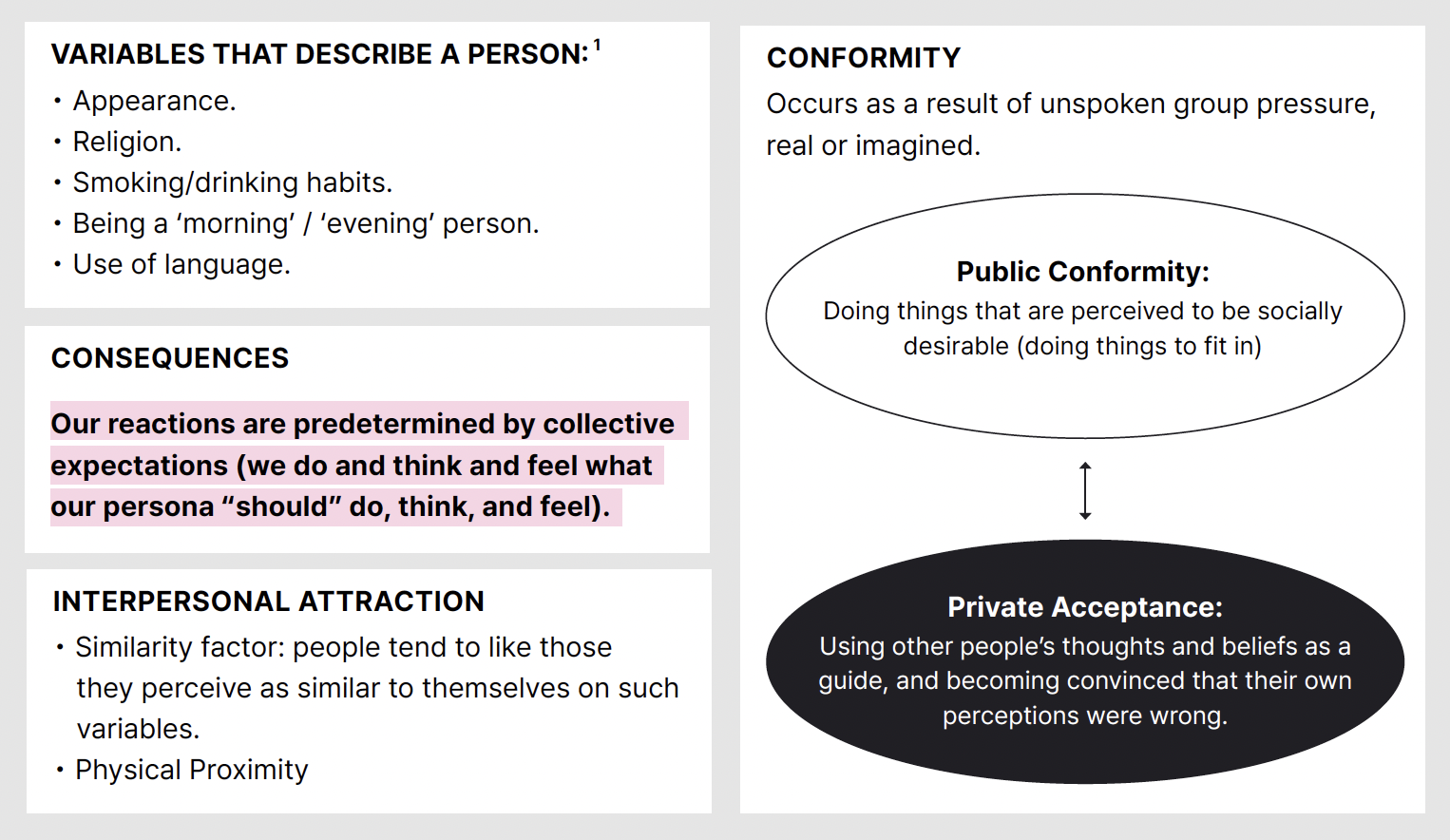
MINDMAP BASED ON THEORIES

Synthesis
Hypothesis
1.
Provide a chance to become conscious of who we are, including the strengths and weaknesses.
When the distinctions become clear and noticed, player can become aware that they can choose the extent to which they identify themselves with a persona.
= Make better performance/choices.
2.
Provide a chance to really think about the ideal as oppose to the realistic responses under a series of given situations.
By actually choosing the responses and have them laid out physically, abstract concept of the self may become concrete and clear.
= In the form of game to make the matter rather enjoyable than serious.
User Persona
![]()
![]()
Design Solution
︎ Design goals in creating the game.
- Foster Self-Reflection: Create prompts and mechanics that encourage players to think critically about their behavior, values, and aspirations.
- Encourage Open Conversations: Facilitate meaningful discussions between players by making the game engaging, inclusive, and non-judgmental.
- Make It Accessible: Ensure the game is easy to learn and play, with clear instructions and relatable scenarios.
- Appeal to a Broad Audience: Design scenarios and responses that resonate with diverse demographics and cultural backgrounds.
- Balance Fun and Depth: Combine introspection with an entertaining and engaging gameplay experience.
- Scalability: Allow for future expansions or themed decks to keep the content fresh and adaptable to various contexts (e.g., relationships, career, personal growth).
︎ Design goals in translating the game into an app format.

Card Game
Question Breakdown




Game Mechanics
The game is basically choosing the ideal answer andthe realistic answer under a given situation. Then, you compare the answers to one another as well as to the other players’ answers. It can be a conversation starter, or a party game, or just a game when you play around with when you are bored. I had to figure out a way to remove the weight of the seriousness in my research and thesis idea and integrate it as a game that is enjoyable for everyone. Following is the game mechanics.

Brand

Card Design

Question Cards
2.5 in x 3.5 in
 Joker Cards
Joker Cards2.5 in x 3.5 in

Ideal Cards
2.5 in x 3.5 in
 Realistic Cards
Realistic Cards2.5 in x 3.5 in

Marketing Materials



Packaging Concepts
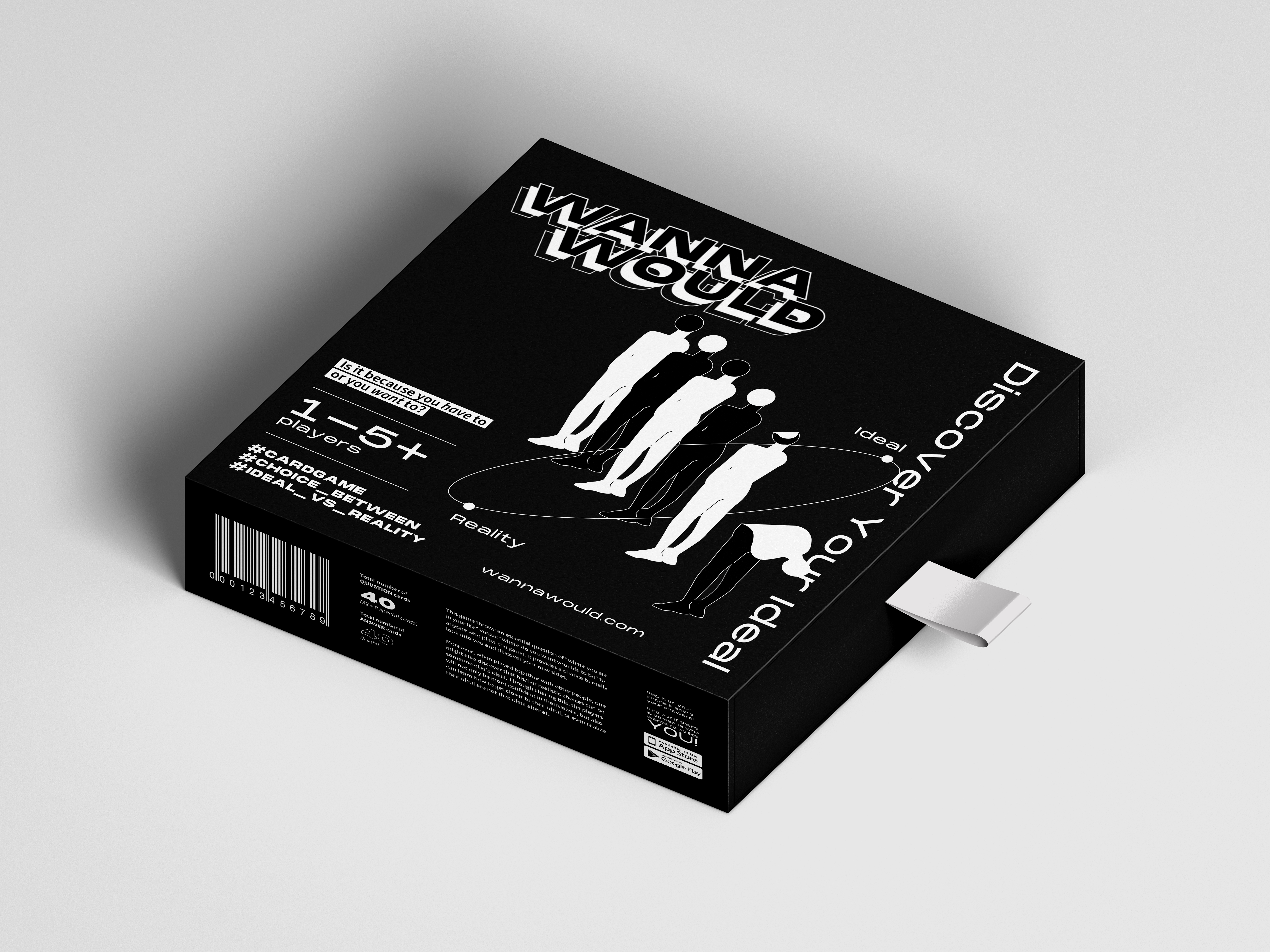
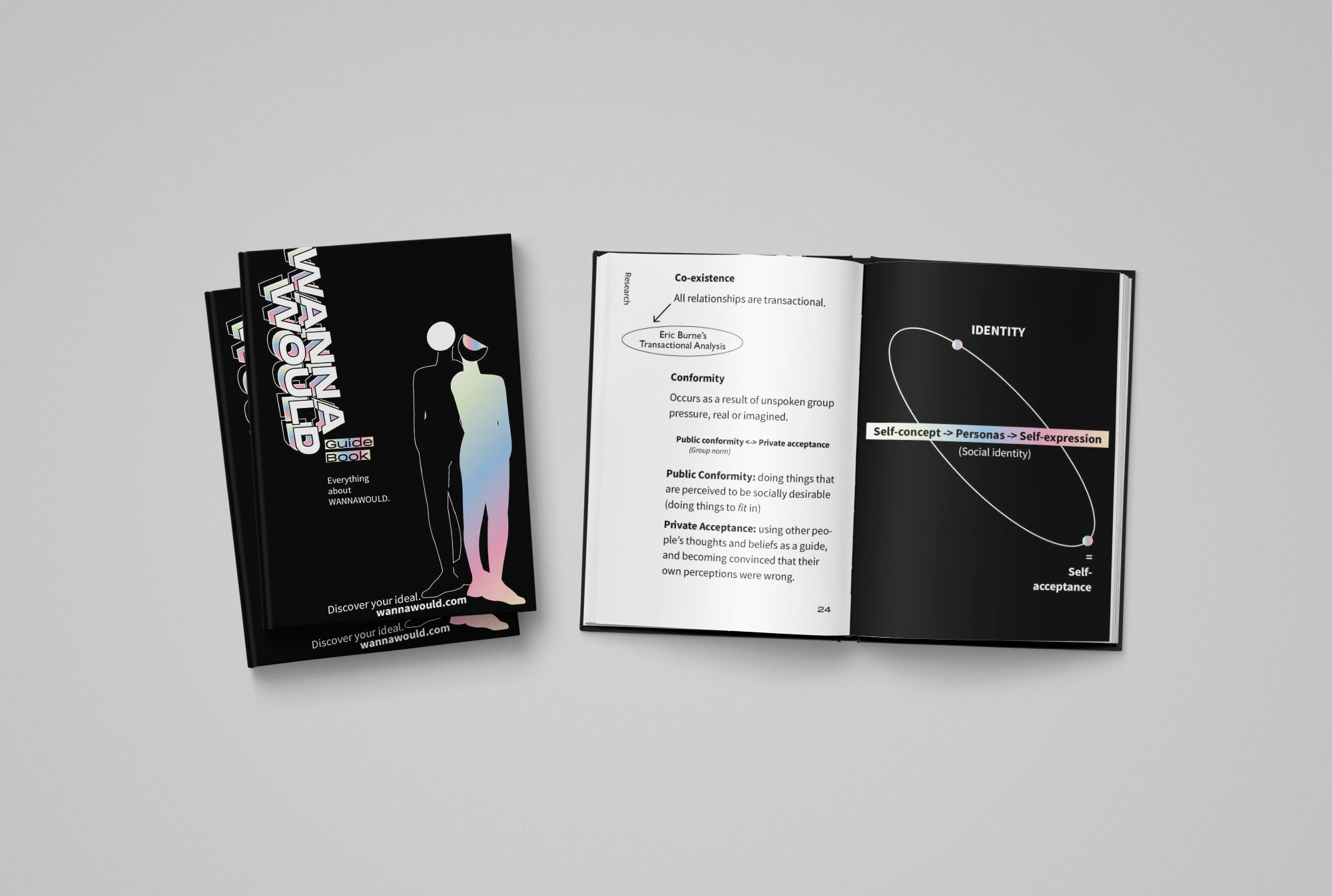


Design Solution
Design Goals
- Solo and Social Play Modes: Include options for solo introspection or multiplayer modes to encourage interaction and sharing among users.
- Secure Sharing Options: Enable users to share their responses with friends securely or invite others to play, fostering connection while maintaining privacy.
- Dynamic Content Delivery: Randomize scenarios and tailor prompts based on user preferences or demographics for a more personalized experience.
- Gamification Elements: Introduce achievements, rewards, or streaks to keep users motivated and engaged over time.
- Community Building: Create features such as leaderboards, discussion forums, or adding custom questions & answers for users to connect and exchange insights.


Information Architecture
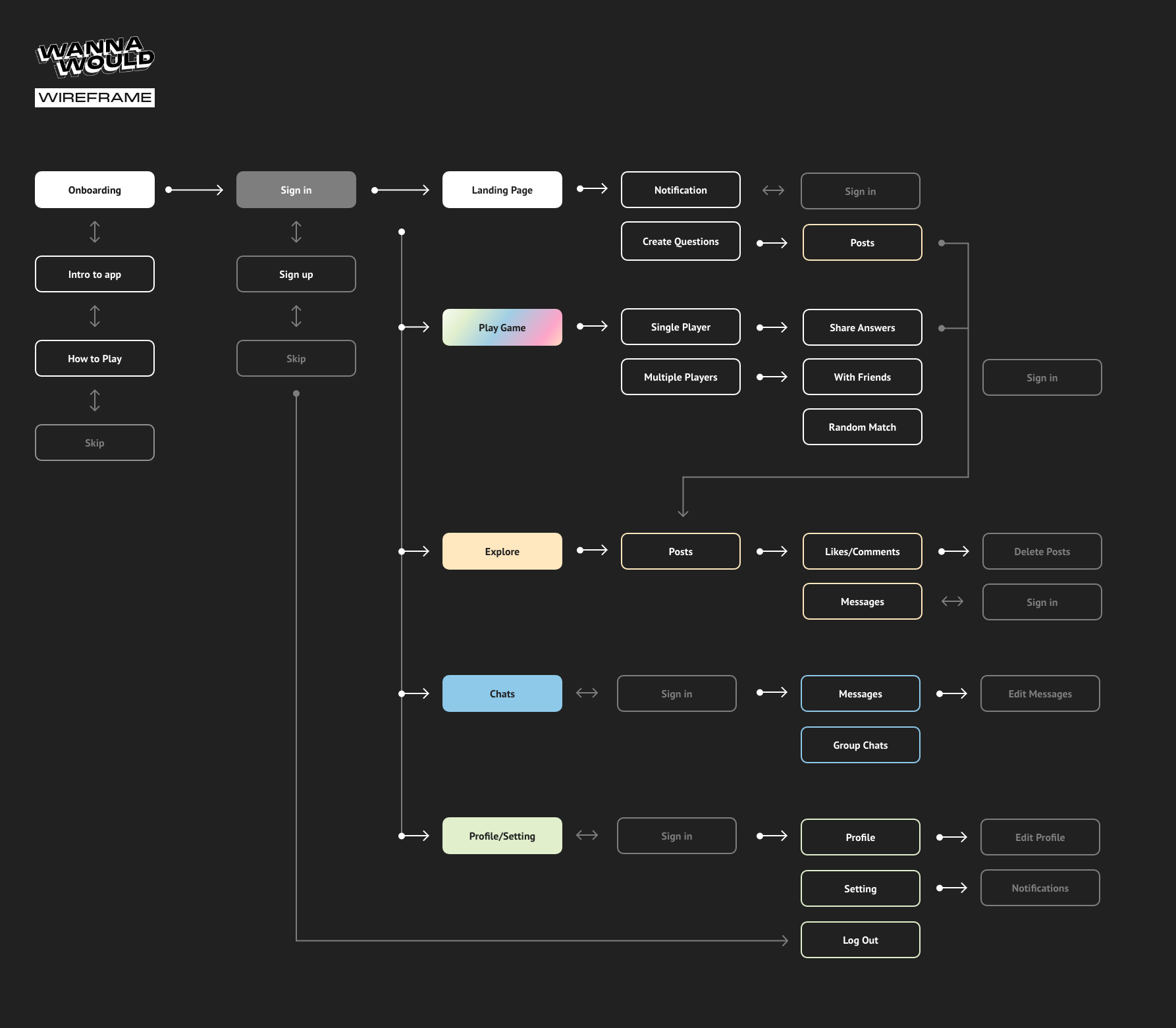
Stylesheet

Prototype







Next Steps
![]()
![]()
Conclusion
The process of creating both a physical card game and its digital app counterpart is a transformative journey that involves creativity, technical problem-solving, and deep empathy for the player experience. It’s not just about building a product, but about crafting something that resonates with others, invites reflection, and brings people together.
Reflection

References
Academy of Ideas. Introduction to Carl Jung - Individuation, the Persona, the Shadow, and the Self.
YouTube, YouTube, 13 Feb. 2016, youtu.be/uhAeXyVDDTc.
Bernstein, Douglas A. Psychology: Foundations and Frontiers. South-Western, 2016.
Description of Transactional Analysis and Games by Dr. Eric Berne Md. 28 Jan. 2013,
www.ericberne.com/transactional-analysis/.
“Function Pairs.” The Myers & Briggs Foundation, The Myers & Briggs Foundation,
www.myersbriggs.org/my-mbti-personality-type/understanding-mbti-type-dynamics/function-pairs.htm.
Luton, Frith. “The Persona as Social Mask – Trap of a Successful Persona.” FrithLuton.com, frithluton.com/articles/persona/.
“MBTI® Basics.” The Myers & Briggs Foundation, The Myers & Briggs Foundation, www.myersbriggs.org/my-mbti-personality-type/mbti-basics/.
Miller, Aidan. “Function Pairs and Learning Styles.” Psychometrics, Psychometrics Canada, 29 Jan. 2016, www.psychometrics.com/mbtiblog/practitioners-corner/function-pairs-andlearning-styles/.
Morad, Natali. “How to Use Psychology to Communicate Better and Avoid Conflict.” Medium, Medium, 7 Mar. 2018, medium.com/@NataliMorad/how-to-communicate-better-withtransactional-analysis-d0d32f9d50da.
“Transactional Analysis.” GoodTherapy, GoodTherapy, 5 Sept. 2016, www.goodtherapy.org/learn-about-therapy/types/transactional-analysis.
Fishery Audit 2022
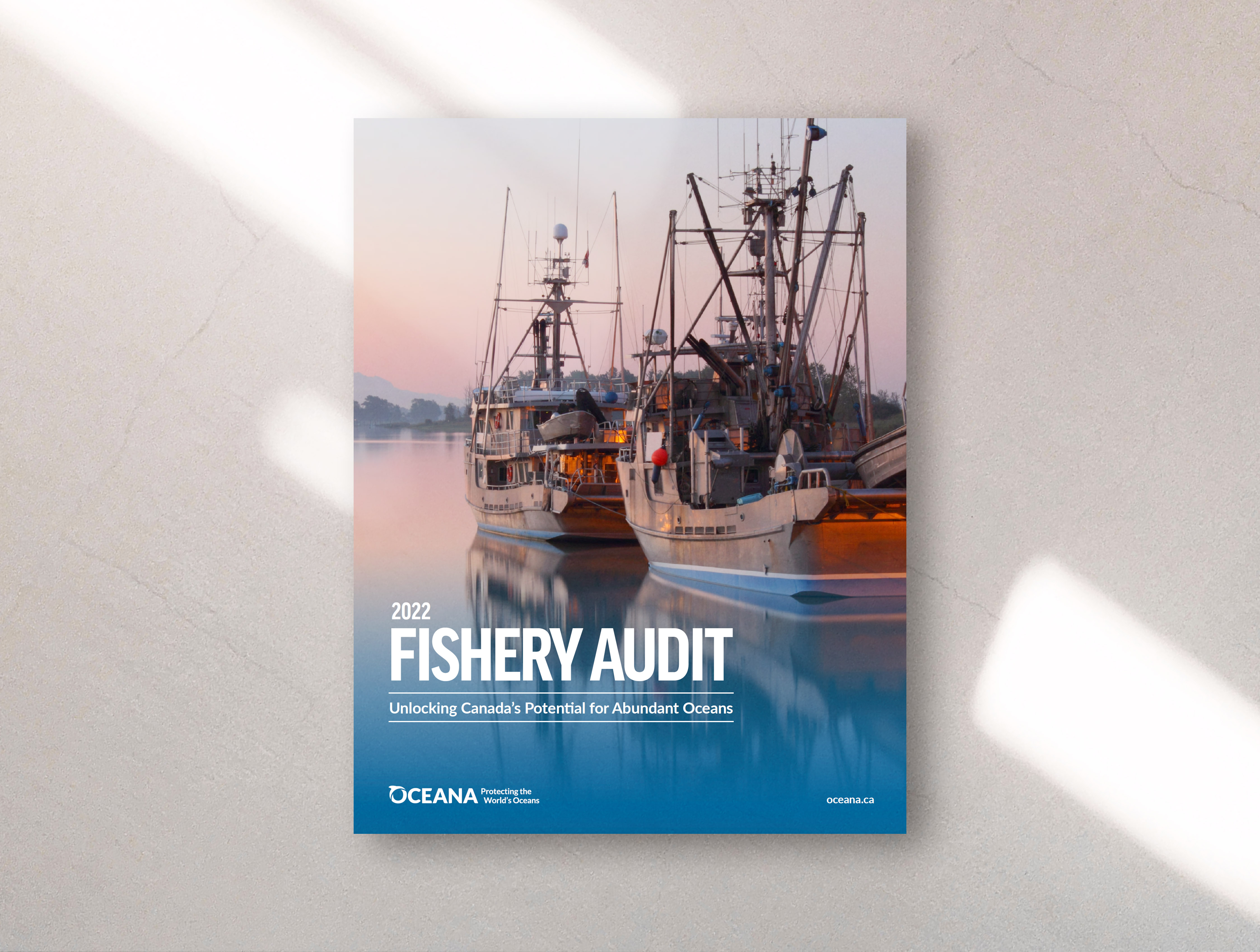
Project Info
Delivered by:
Public Good Design
Client:
Oceana Canada
Delivered by:
Public Good Design
Client:
Oceana Canada
Role
Graphic Designer
Graphic Designer
Timeline
2022
2022
Project Type
Editorial Design, Web design, UI/UX, Information Design
Editorial Design, Web design, UI/UX, Information Design
Oceana Canada is an independent charity established to restore Canadian oceans to be as rich, healthy, and abundant as they once were, affiliated with the international family of Oceana organizations.
Fishery Audit is an annual report that ‘assesses the current state of Canada’s fisheries and fisheries management, tracks annual progress and provides recommendations to meet federal policy commitments to return abundant wild fish populations to Canada’s Oceans’ (Fishery Audit 2022).
I had an opportunity to design 2021 and 2022 Fishery Audit report as well as their microsites. While working on the project, my focus was to translate the data provided by the data scientists accurately yet easily understandable by the public at the same time.
Fishery Audit is an annual report that ‘assesses the current state of Canada’s fisheries and fisheries management, tracks annual progress and provides recommendations to meet federal policy commitments to return abundant wild fish populations to Canada’s Oceans’ (Fishery Audit 2022).
I had an opportunity to design 2021 and 2022 Fishery Audit report as well as their microsites. While working on the project, my focus was to translate the data provided by the data scientists accurately yet easily understandable by the public at the same time.
Report Layout









Cancer Canada Rebranding

Project Info
Rebranding
School Project
Rebranding
School Project
Timeline
2018
2018
Project Type
Brand Identity,
Visual Design
Brand Identity,
Visual Design
Tool Used
Adobe Illustrato
Adobe Photoshop
Adobe InDesign
Adobe XD
Adobe Illustrato
Adobe Photoshop
Adobe InDesign
Adobe XD
Brief
CCS | The Canadian Cancer Society (CCS) describes itselfas “a national, community-based organization of volunteers,whose mission is the eradication of cancer and the enhancementof the quality of life of people living with cancer.” They also provide advocacy on cancer issues, disseminate informationon cancer, provide support to individuals affected by cancer(patients and their families), as well “encourage” Canadians to make lifestyle choices that will lead to reduced chances of being diagnosed with cancer.

Change in Direction
The Canadian Cancer Society needs to adopt a more aggressive marketing and communications position.

Brandmark Rework


Design Application


Visual voice




